Exploring the Beautiful Swiss Riviera in 4 Days
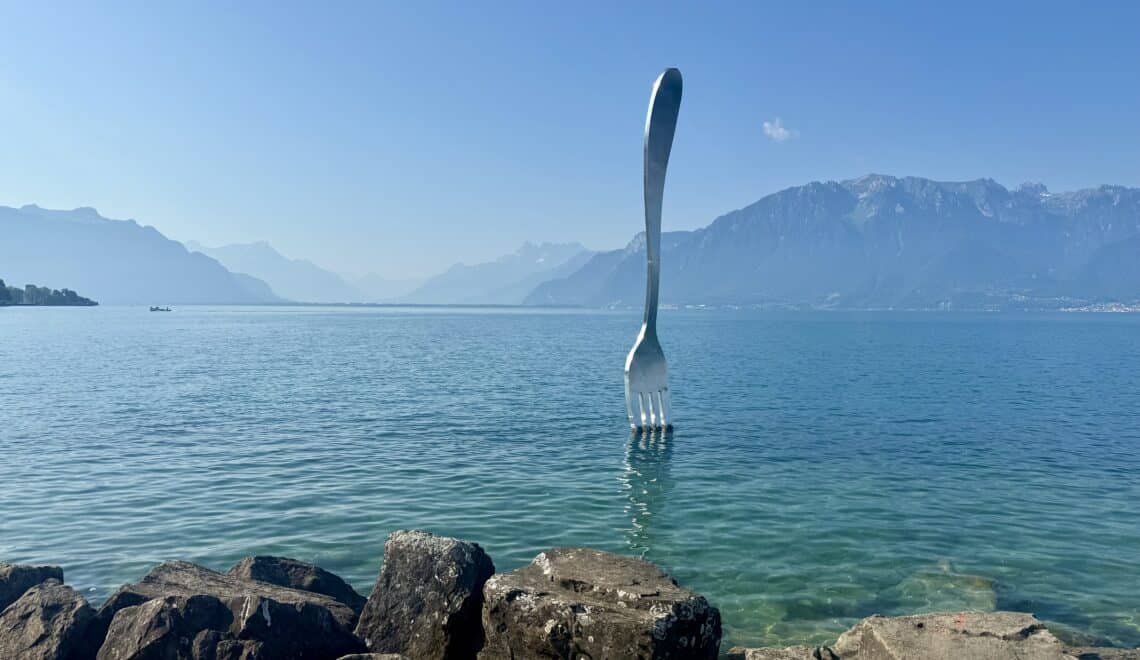
The Swiss Riviera, on the shores of sparkling Lake Geneva, is a delightful place to spend several days. It has it all: nature, history, vineyards, castles, water, mountains, markets, great food, and endless recreational opportunities.
The 40-mile Riviera runs from the city of Lausanne (less than an hour from Geneva), through the small, artsy town of Vevey, to postcard-perfect Montreux. Throughout the area, the deep blue lake, framed by the French Alps in the background, is almost too beautiful to believe.
We based our trip in Montreux, and this itinerary reflects that. It is a terrific jumping-off point for all the attractions in the area, and is a transportation hub. But Vevey would be an good base, as well. (The top photo, with the fork, was taken there.) Some prefer the larger city of Lausanne, but we find it less convenient and less charming. Since the towns are a short train ride away from each other, this itinerary can be followed regardless of where you choose to base. The days can be arranged in any order.
*** Please note, this page contains affiliate links, meaning we may earn a small commission if you book/apply through them (at no extra cost to you).
Table of Contents
Upon checking into a hotel in Montreux or Vevey, visitors will be given a handy Riviera Card providing free local transportation and discounts on museums and attractions. However, if you plan to visit multiple locations in Switzerland, consider purchasing a Swiss Travel Pass. It is pricey up front, but makes travel of any kind (train, bus, metro, funicular, boat, and more) easy and free, as well as providing free admission to nearly all museums in the country, and other attractions. It has many flexible options.
Day 1 – Montreux – Flowers, a Castle, and Queen
Upon arriving in Geneva by plane or train, it is a scenic one-hour train ride to Montreux (Swiss train info available here) . A quick note about the lovely, usually laid-back town: It is quite famous for its two-week Jazz Festival each July, the second largest such festival in the world. However, unless it is your intent to attend the renowned festival, it would be best to avoid the town between the last week in June (when construction for the event is taking place everywhere) until the festival is complete in the latter half of July.
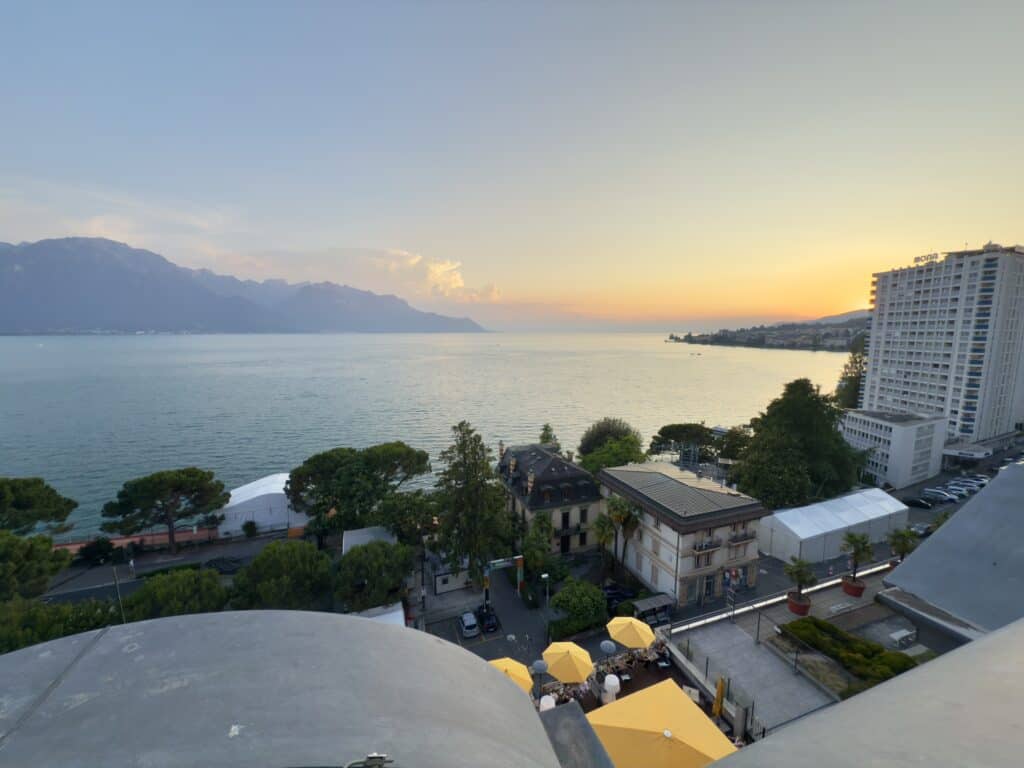
Any other time, it is a great base to explore the Riviera. There are lots of nice places to stay in Montreux. However, the historic Belle Époque Grand Hotel Suisse Majestic is tough to beat, in no small part due to its location across the street from the train station. It sounds like an unsightly and loud location, but after entering the hotel (from the rear, on the train station side), one wouldn’t even know a train was in the vicinity. The hotel is completely oriented towards beautiful Lake Geneva.
The photo above was taken from our lakefront room. (Splurge for that view if possible!) With a helpful, friendly staff, an excellent restaurant, and decently-priced room service, it’s hard to find fault with this hotel.
One of the most popular attractions in Switzerland is located just a delightful walk away from the center of Montreux: Château Chillon. To arrive on foot (do so if possible), take a two-mile walk along the flower and art-lined lake promenade.
Montreux is its own little micro-climate, providing mild weather year-round, so the promenade features many unusual plants, flowers, and trees that cannot grow anywhere else in the country. The walkway smells as good as it looks!
Seeing the castle in the distance is a thrill, and it gets better the closer one gets.
The promenade alone, (6 miles long if you walk the whole route), is reason enough to visit Montreux.
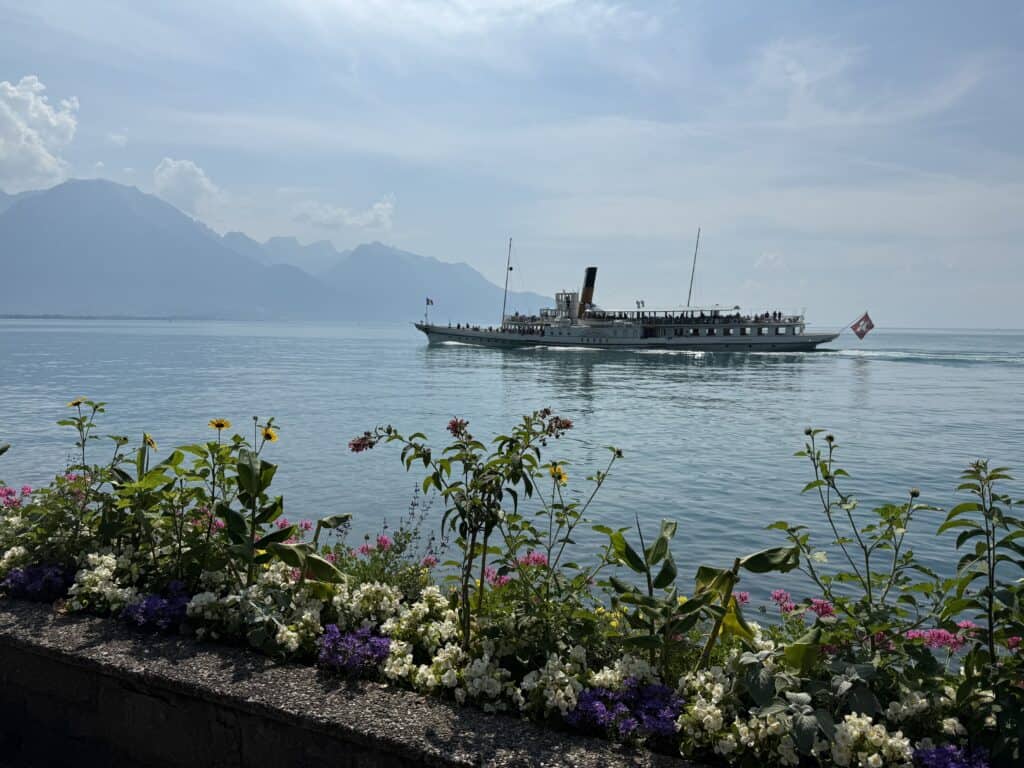
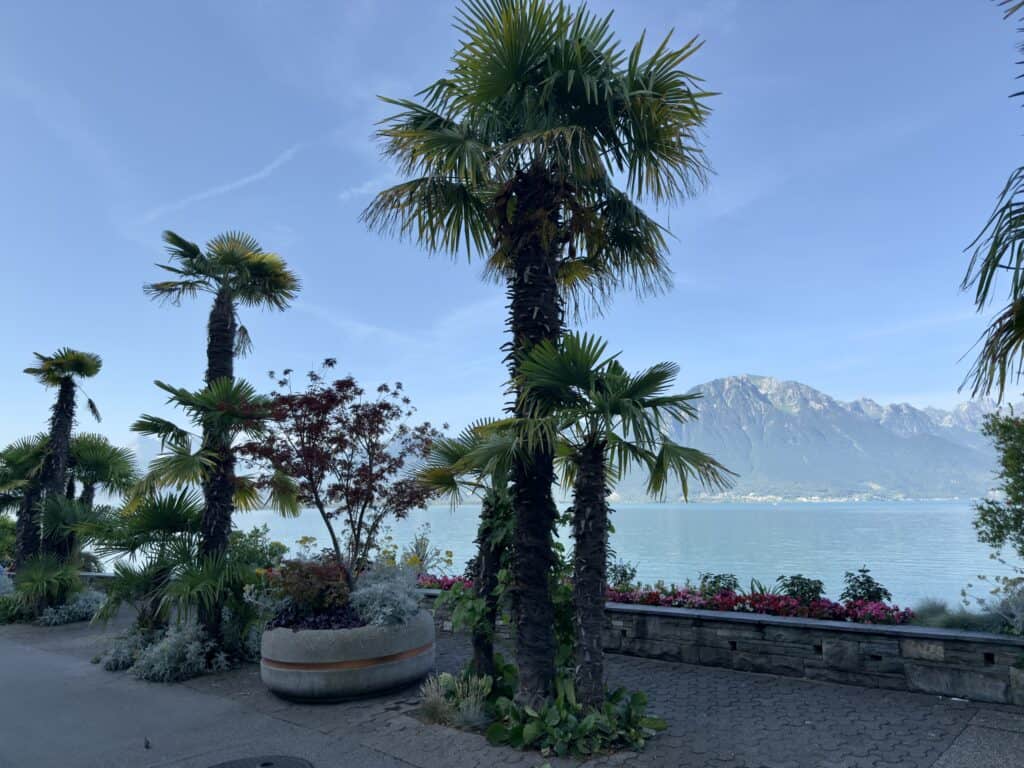
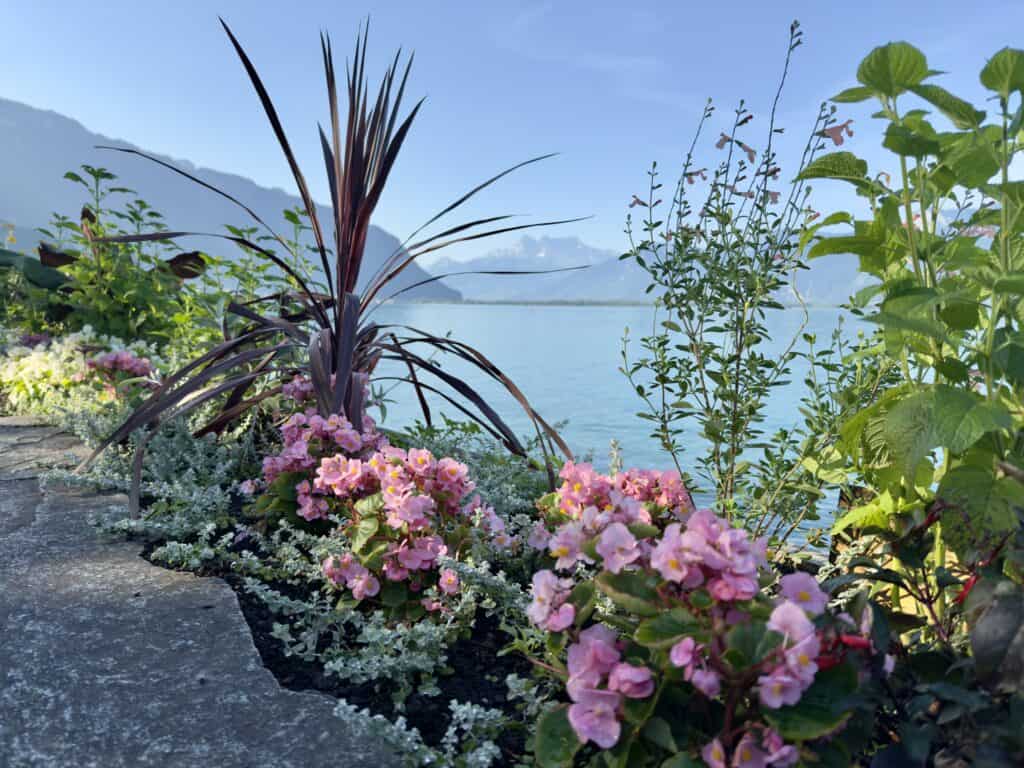
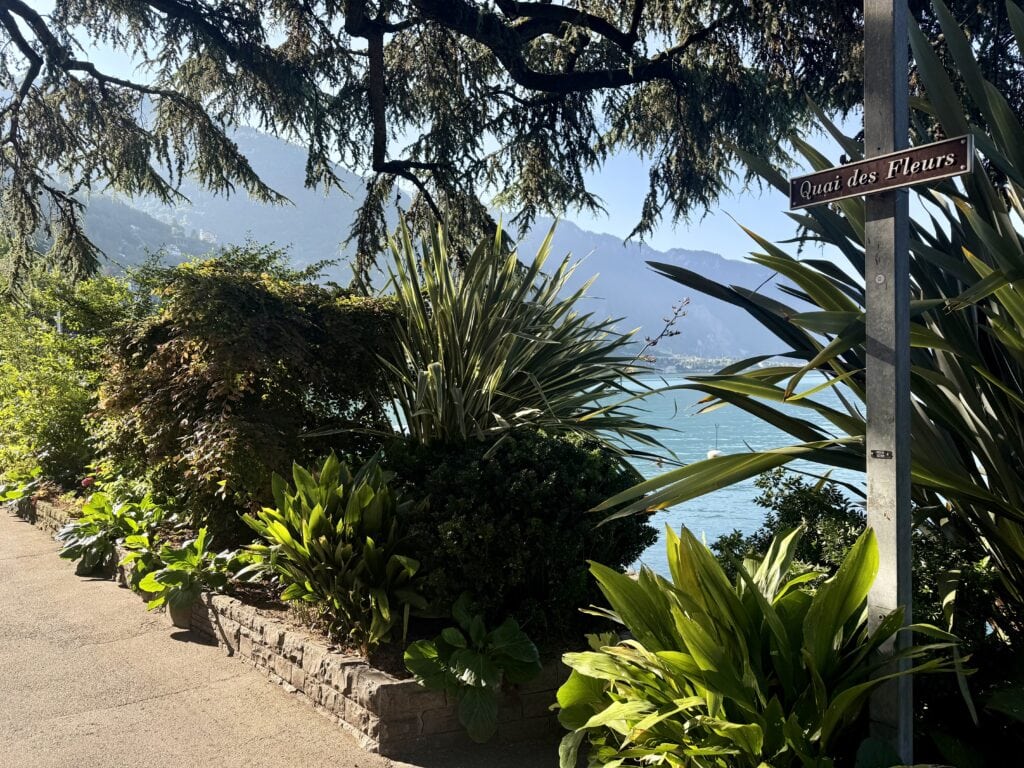
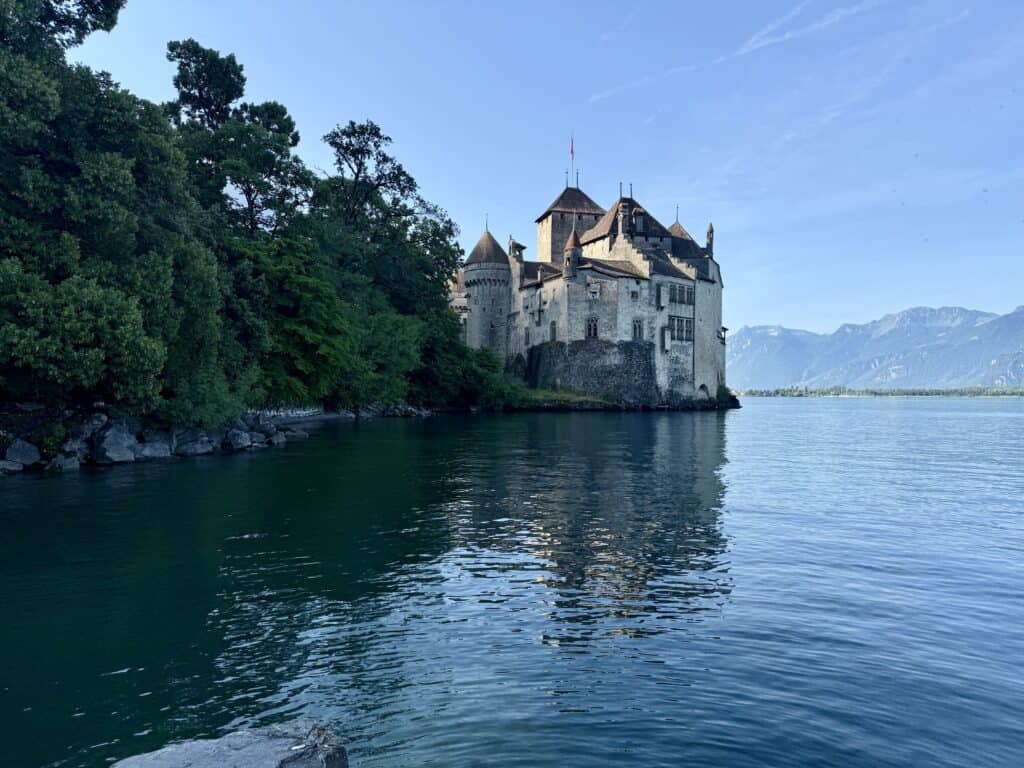
Château Chillon has been sitting atop a small limestone island in Lake Geneva for a thousand years. From the 12th century to 1536, the Savoy family controlled the château, followed by the Bernese family until 1798, and then the local government from that point forward. However, archaeologists have found that the castle dates back to at least 1150, but who the early inhabitants were is unknown.
The self-guided tour includes 40+ sites, including numerous interesting chambers and bedrooms, halls and courtyards where grand events were held, enormous dining rooms, two horrifying prisons, a wine cellar, a creepy crypt, a coat-of-arms hall, a chapel, the watchtower, and the treasury building.
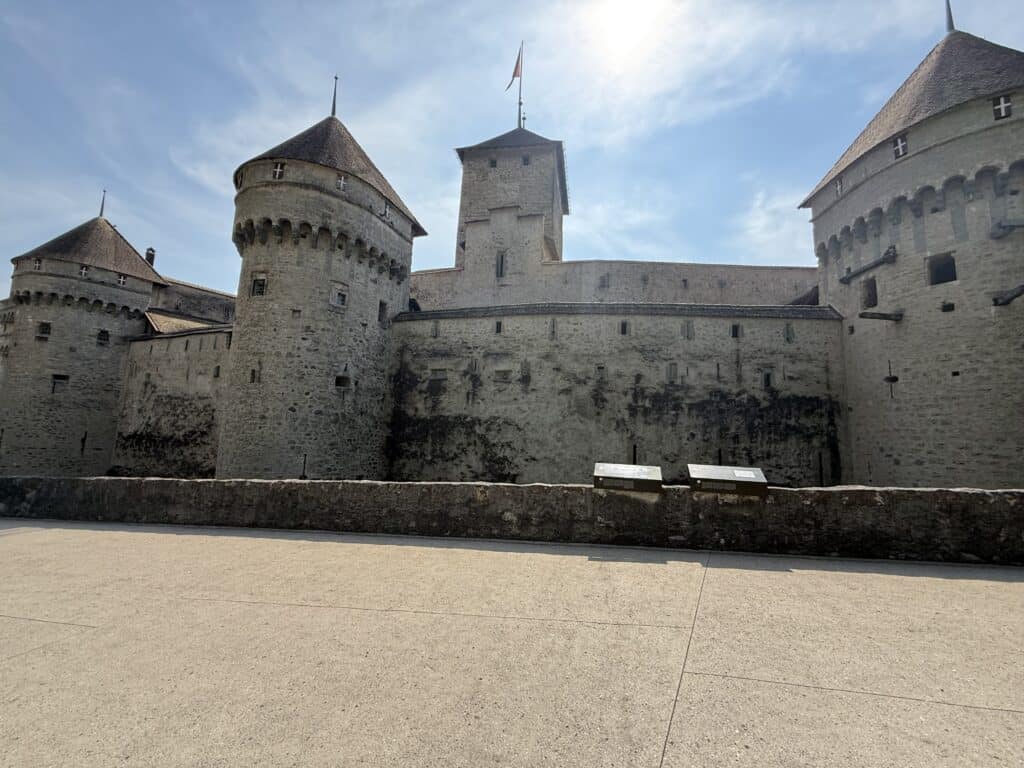
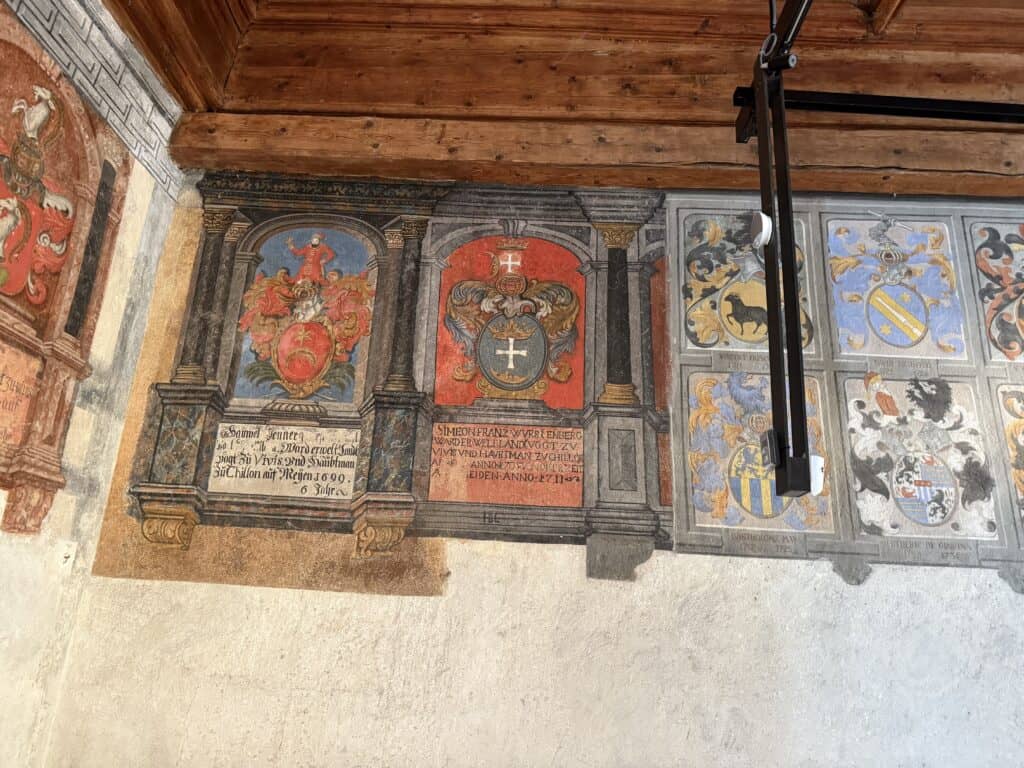
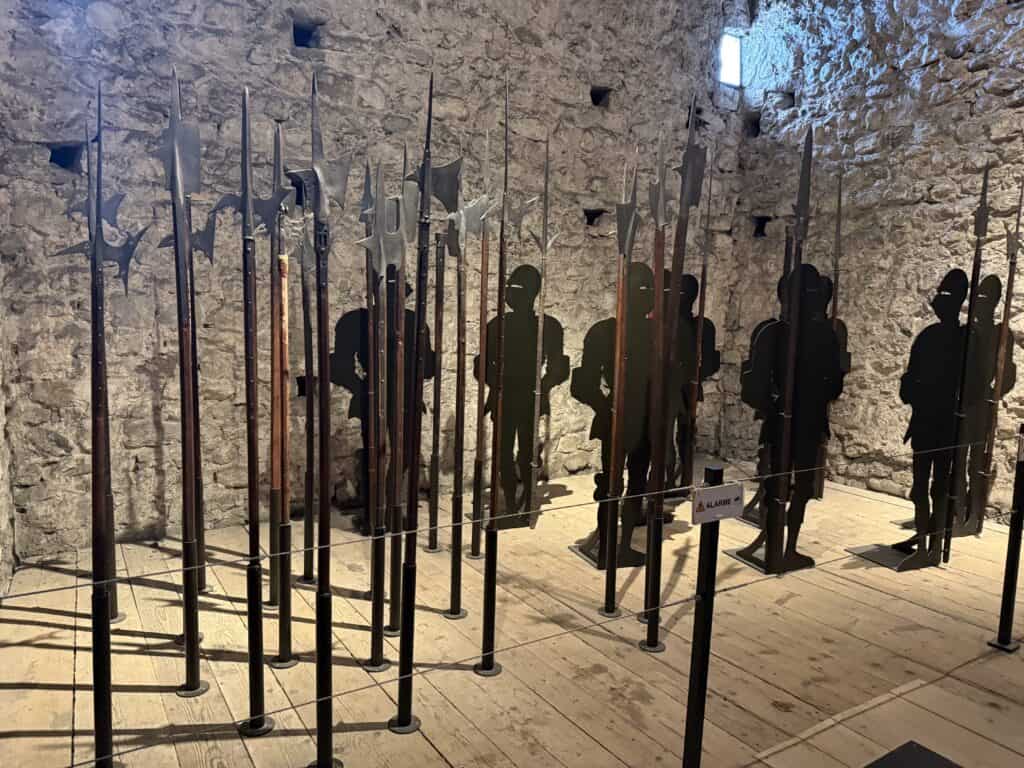
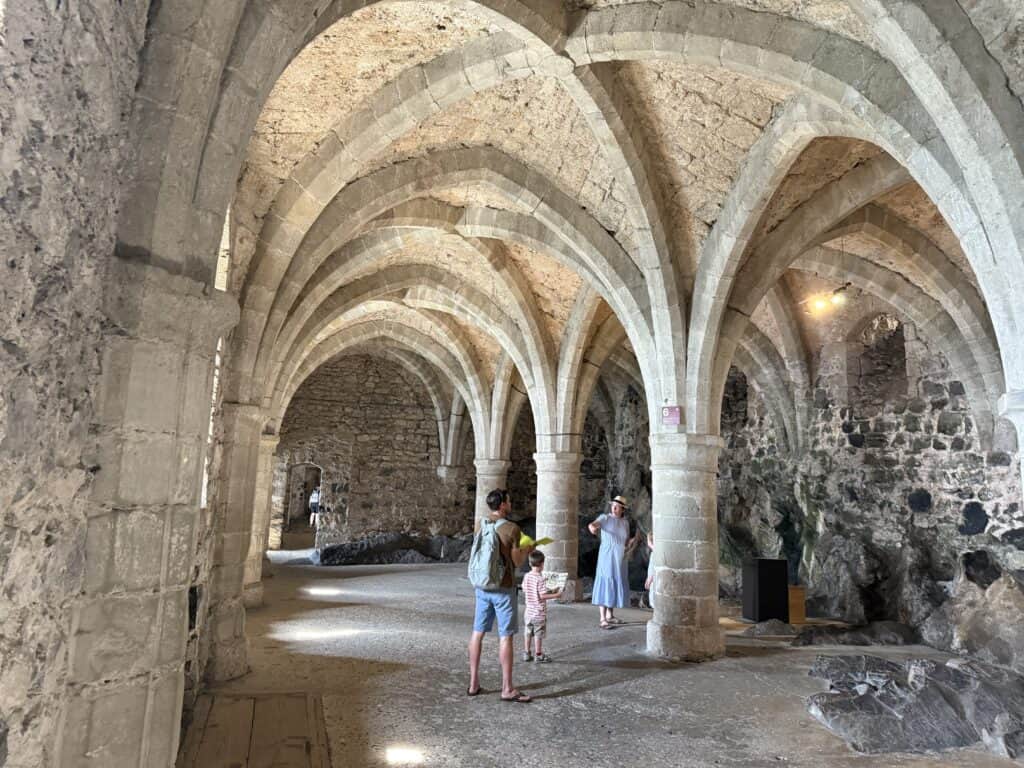
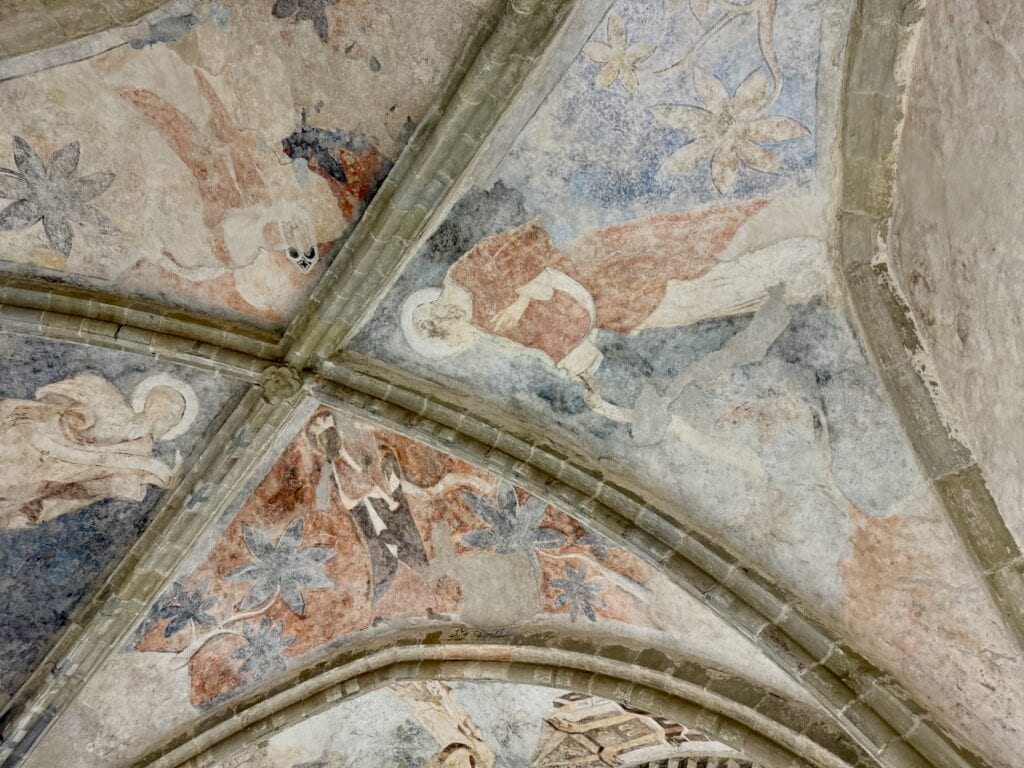
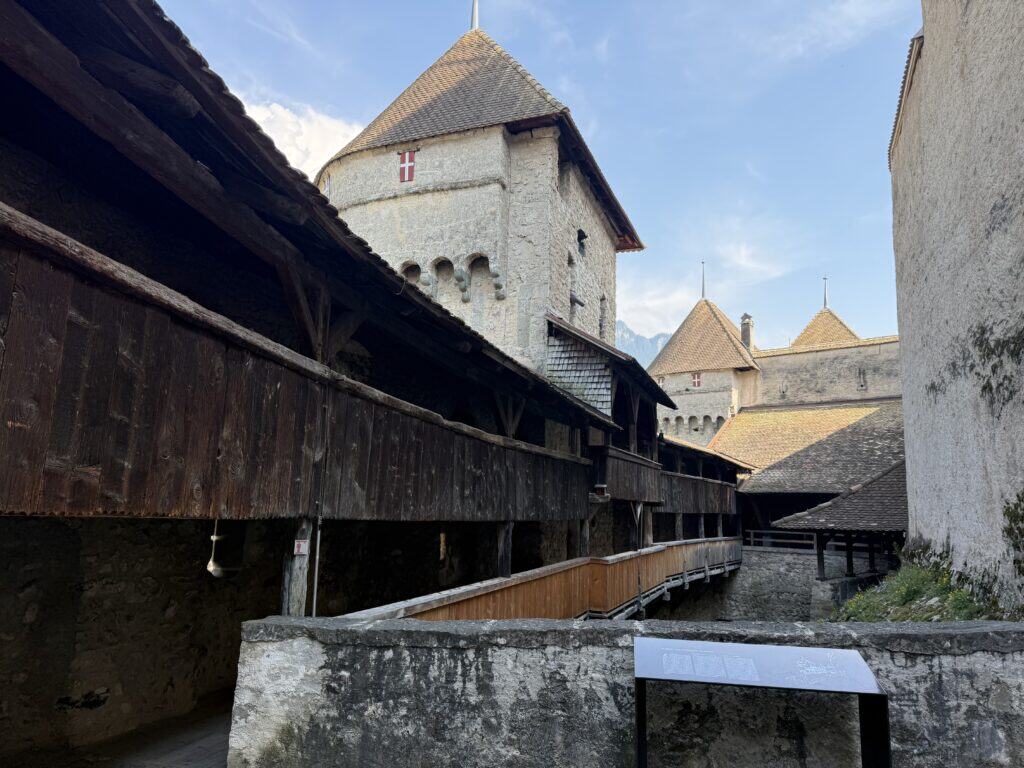
The most famous prisoner at the château was Francois Bonivard (1493 – 1570), a nobleman imprisoned for political reasons, whose captivity was recounted in 1816 by Lord Byron in the famous poem The Prisoner of Chillon. Lord Byron’s signature is carved into a pillar in the prison. (Though there is some controversy over its authenticity.)
There is no need to walk back; it’s a 3-minute train ride to the middle of Montreux.
A few minutes’ walk from the train station is the Montreux Casino. In and of itself, perhaps unexciting to many. But inside the Casino is an unexpected treat: The Queen Experience.
In the late 1970s, the band Queen was a worldwide sensation, and they realized they weren’t able to function in London, where they were based. They needed a place to work where people would leave them alone. The Montreux Casino had a state-of-the-art recording studio, Mountain Studios, that was attracting A-list musical talent such as The Rolling Stones, David Bowie, AC/DC, and many more. Queen had a recording session there for the album Jazz in 1978. They liked it so much they purchased the studio, and owned it from 1979 – 1993, just after Freddie Mercury’s death. 7 Queen albums were recorded there.
Whether or not you’re a fan of Queen (but, honestly, who isn’t?), this small, well-done exhibition in honor of the band and, specifically, of Freddie Mercury, is very much worth a visit. It is full of information, photographs, costumes, handwritten notes and lyrics, interviews, humorous quotes, performances, a fascinating short film, and some of the recording equipment used by the band.
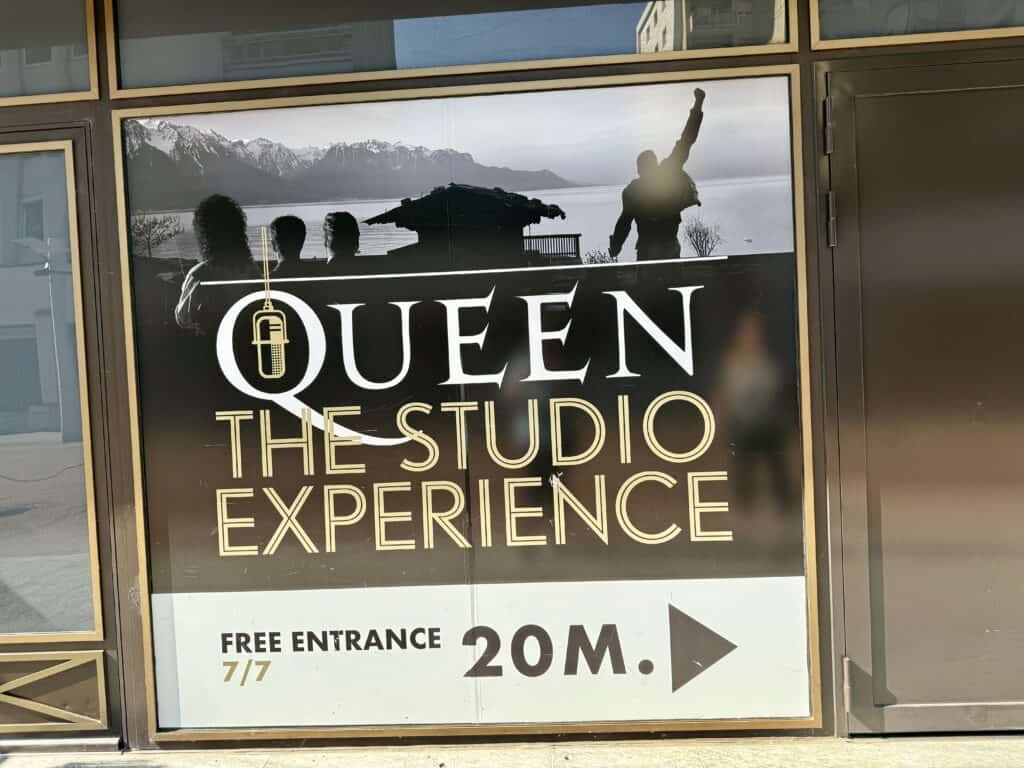
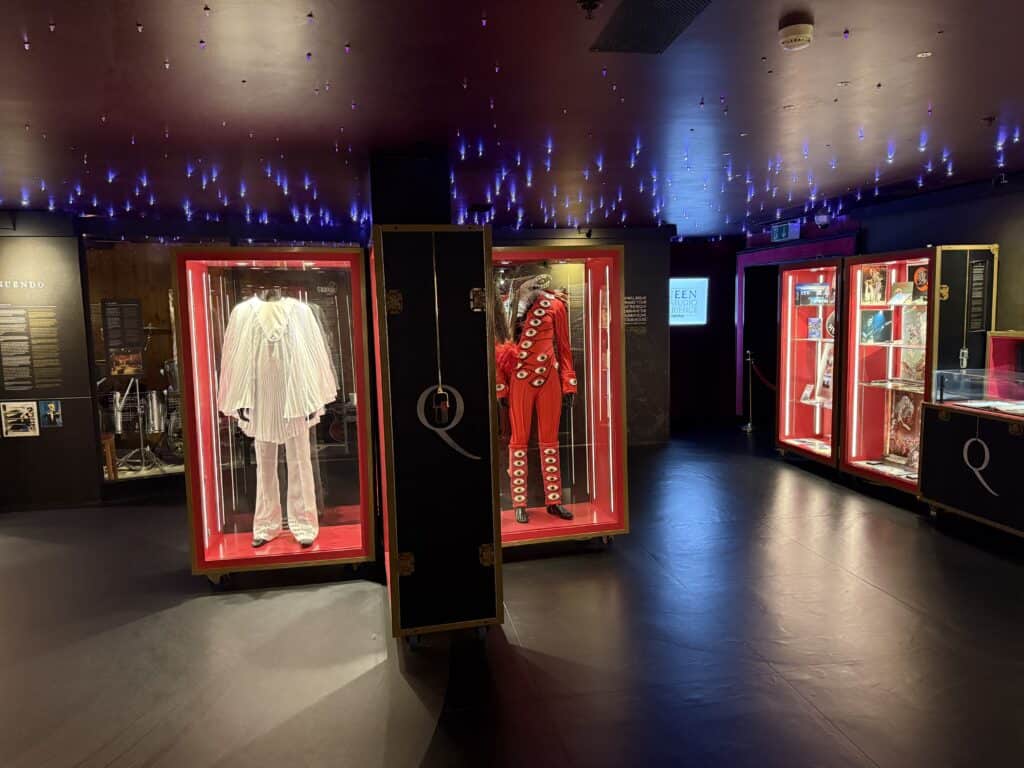
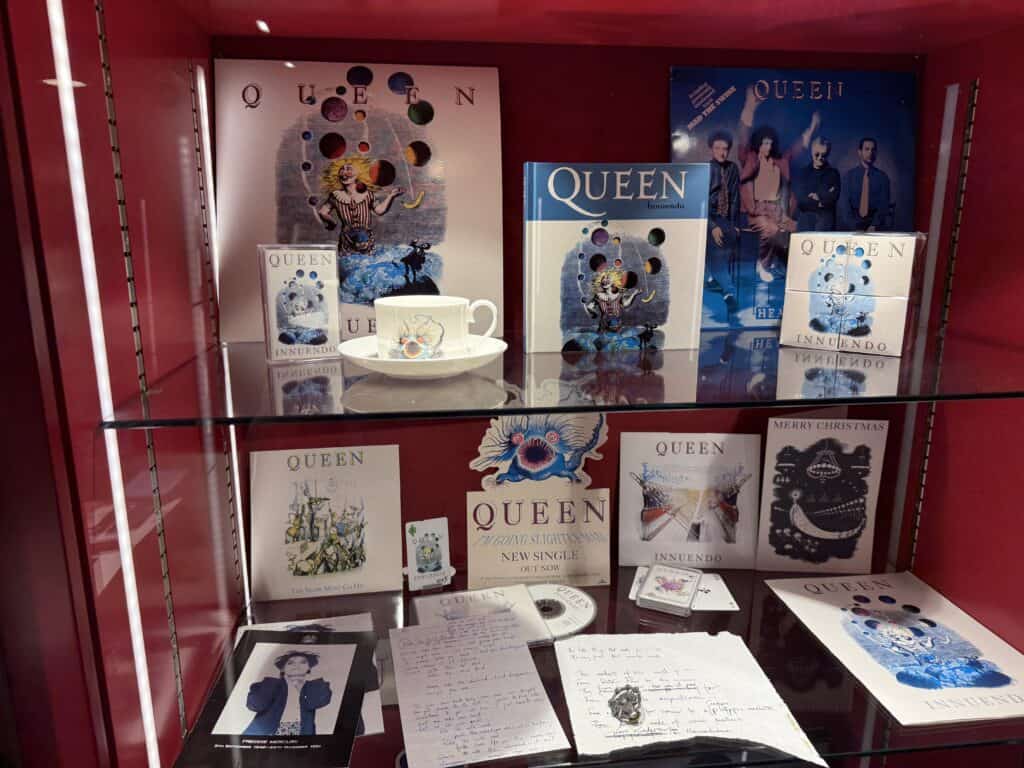
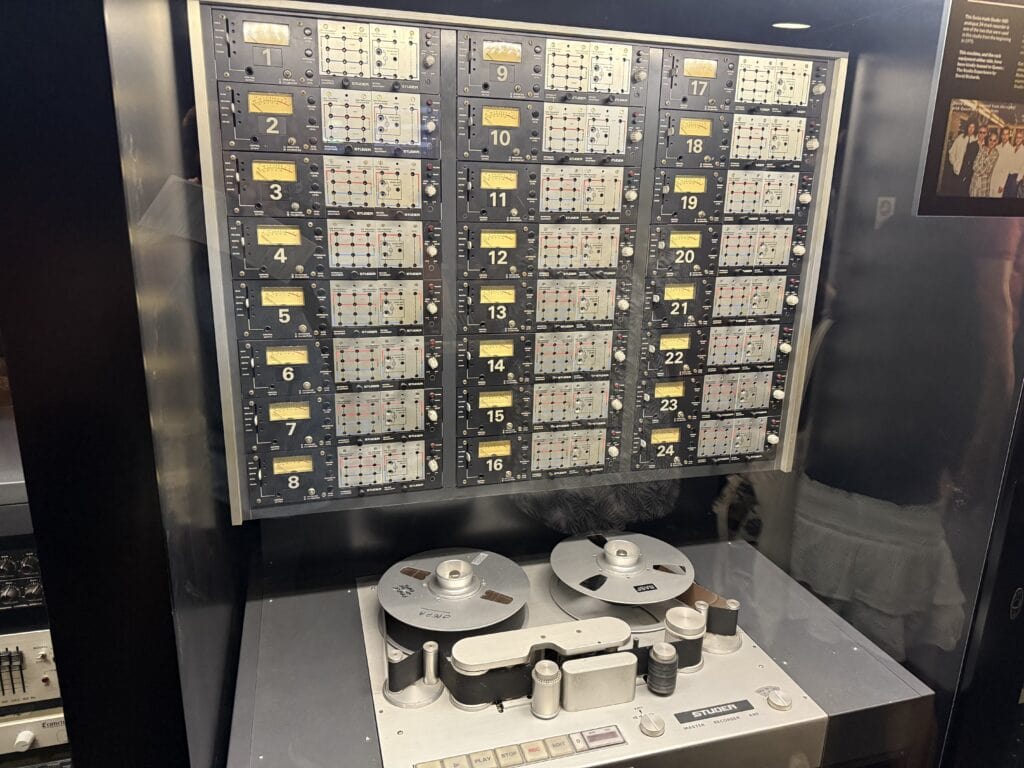
Along the flowered promenade, there is an iconic bronze statue of Freddie Mercury, erected in 1996, created by a partnership between the remaining band members, the City of Montreux, and private donors. The statue, immortalizing Mercury’s place in Montreux’s history, is often covered with flowers from adoring fans, even today.
Day 2 – Tiered Lavaux Vinyards – Food, Wine, and Hiking
The Swiss Riviera is known for its spectacular terraced vineyards covering the lower slopes of mountains on the northern shore of Lake Geneva. The nearly 2,000 acres of vineyards can be traced back to the 11th century and stretch from Lausanne to Montreux. There are 50+ miles of hiking trails of varying difficulty that wind through the vineyards, passing by villages and small wineries. The whole area is a UNESCO World Heritage Site. Very little Swiss wine is exported, despite its quality, so this is a nice opportunity to taste wines not available elsewhere. What a way to spend a day!
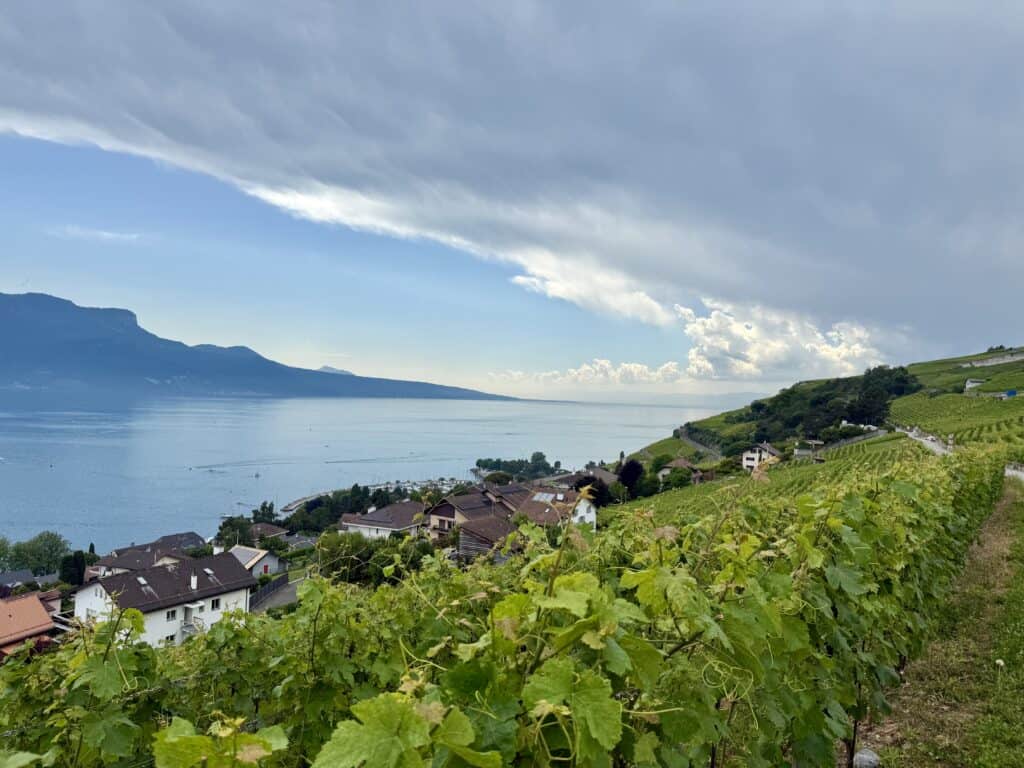
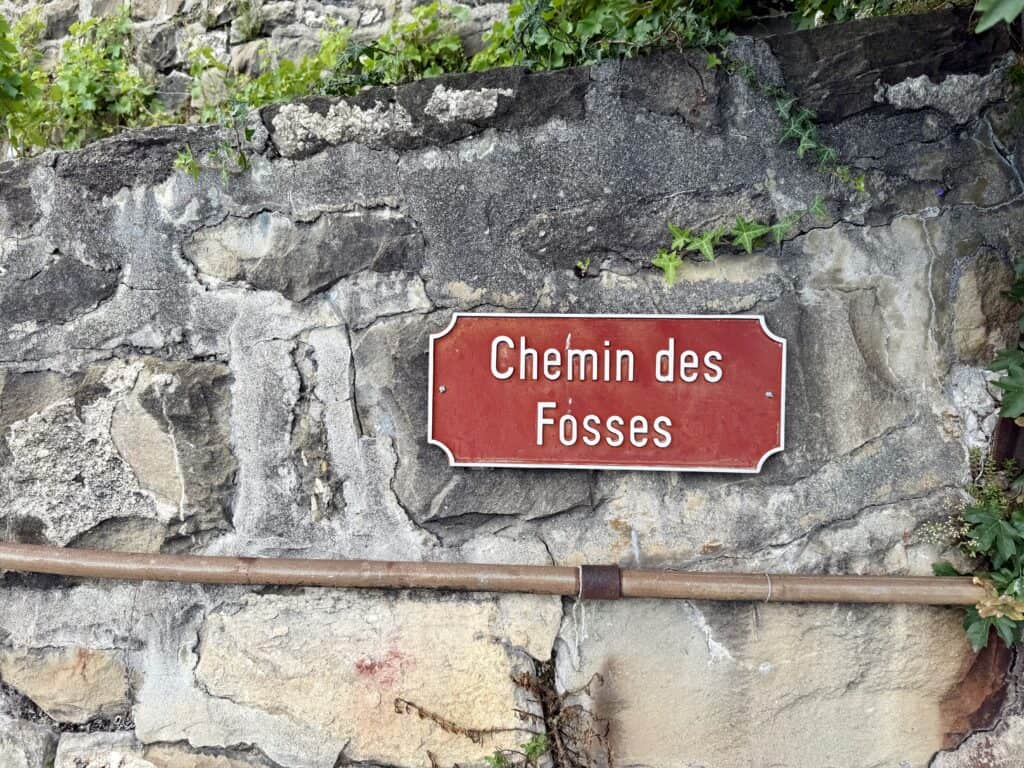
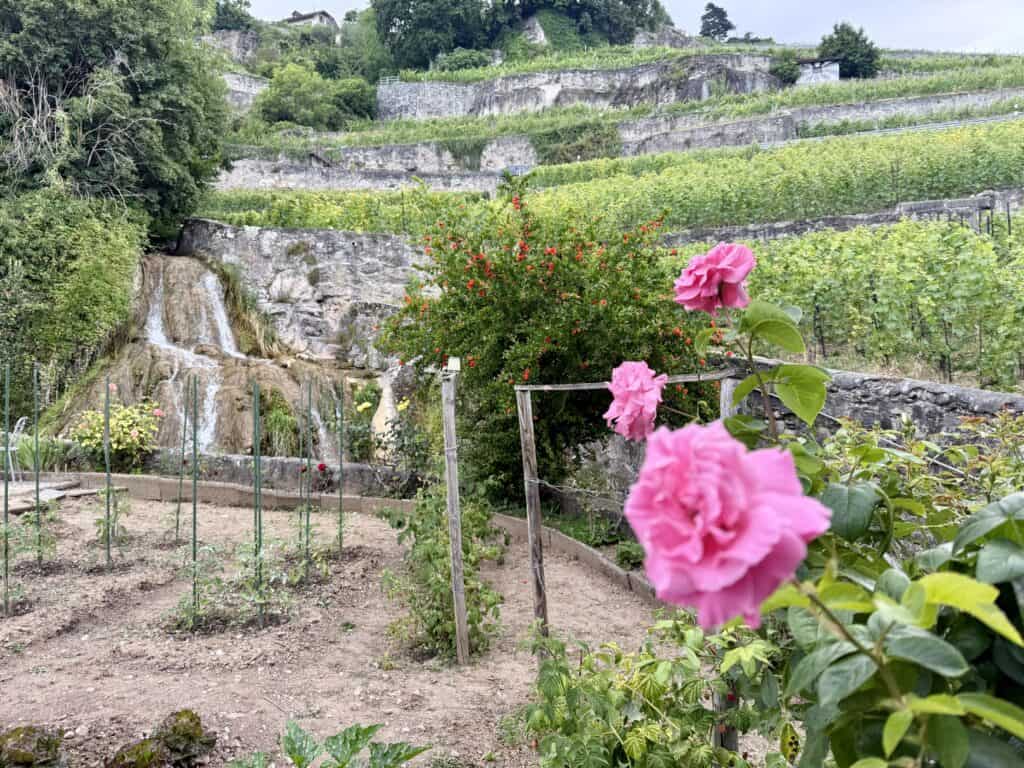
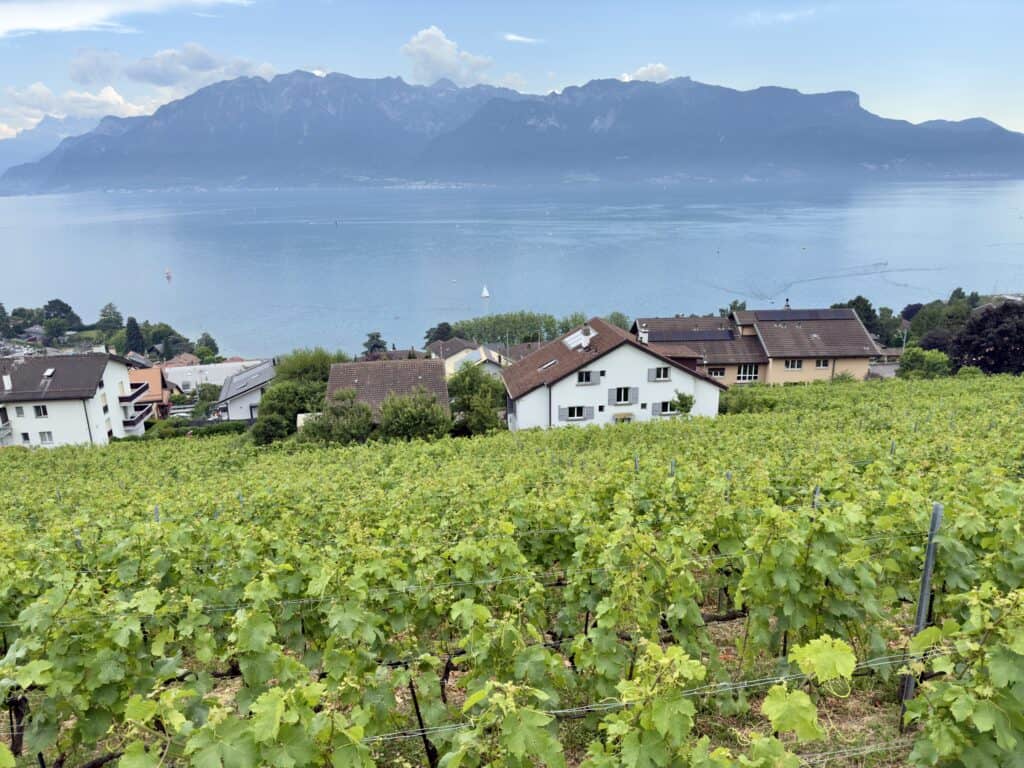
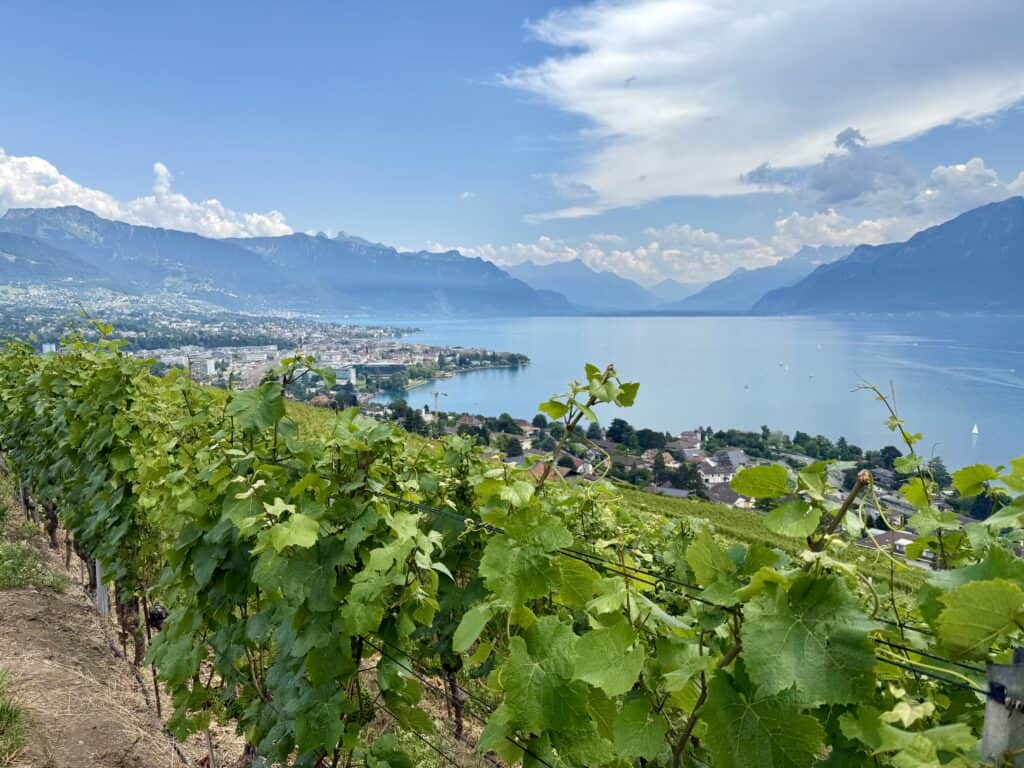
There are dozens of hikes from which to pick. All Trails is a better resource than Google Maps here, as Google rudely doesn’t recognize the most scenic routes. (All Trails has a fee, but offers a free 7-day trial.) Popular hikes include the long St-Saphorin – Lutry, and a shorter loop that can be taken from Chexbres, St-Saphorin or Rivaz. Each town has a train station, so if you do a one-way hike, you just hop on a quick train to return to where you’re staying. It’s a good idea to book in advance for any wineries along the way you’d like to visit.
Another option is to take a guided hiking tour with, for example, Edible Switzerland or Get Your Guide. Guides will arrange wine tastings and even a picnic lunch along the way.
If you’d prefer to skip the hiking, a delightful day in the area can be had without much exertion at all! There are several nice restaurants and many wineries to choose from. If a ride up a scenic funicular, leading to a fabulous lunch on a terrace overlooking the whole area, followed by an afternoon at a wonderful, welcoming winery perched above the lake, sounds like a great day to you, consider the following:
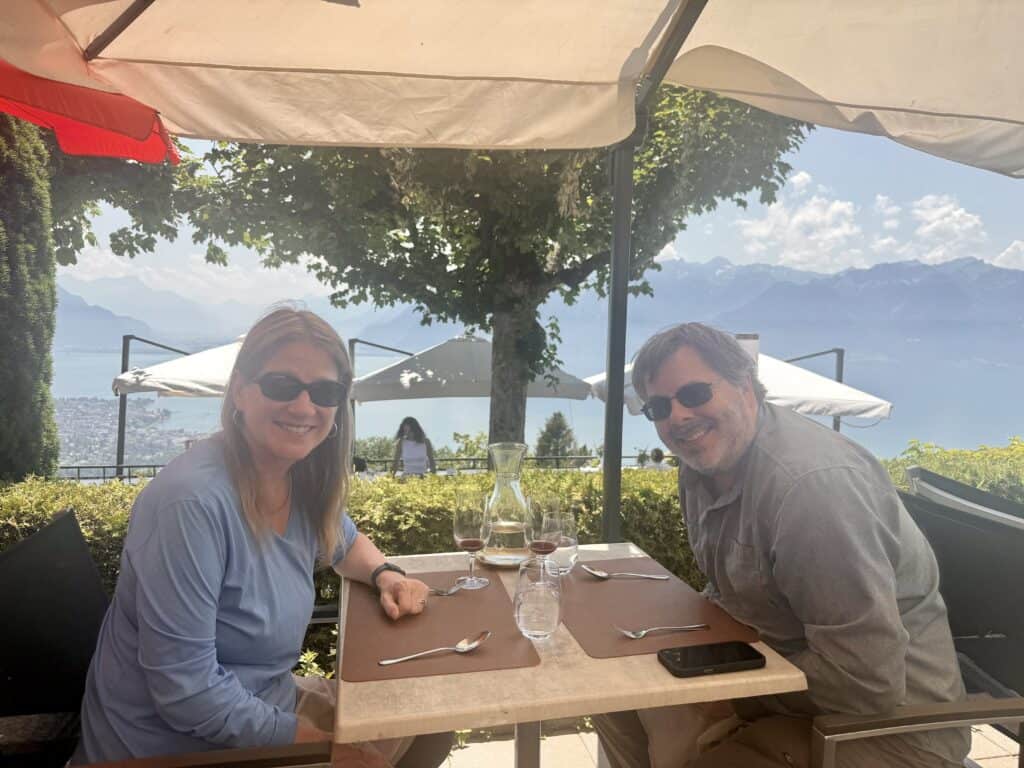
Take a train to Vevey (6 minutes from Montreux and 14 minutes from Lausanne) and take the 10-minute, mostly lakefront, walk to the funicular. (Google Maps calls it Vevey-Funi.) Ride the funicular up to Mont-Pèlerin, and walk just a few steps to the Chalet du Mont-Pèlerin. Reserve in advance, and be sure to request a table on the panoramic terrace. The outstanding menu features local, seasonal ingredients. If you wish, the award-winning sommelier will suggest a perfectly paired wine.
After lunch, head back to the funicular and ride it down to the picturesque wine-making village of Chadronne. (Push the button to request the stop in Chadronne, as it doesn’t stop unless it’s requested.) Walk a few blocks to the family-owned and run, century-old, Neyroud-Fonjallaz winery. Tastings and tours are relaxed, unpretentious affairs. Plan on spending well over an hour, and wishing for longer. The covered patio where the tastings are conducted has a gorgeous view over the vineyards and down the mountain to Lake Geneva.
(If you’re going on a Saturday, most wineries are only open until noon. So go to the winery first, then a late lunch at the restaurant. Sundays, the wineries are closed.)
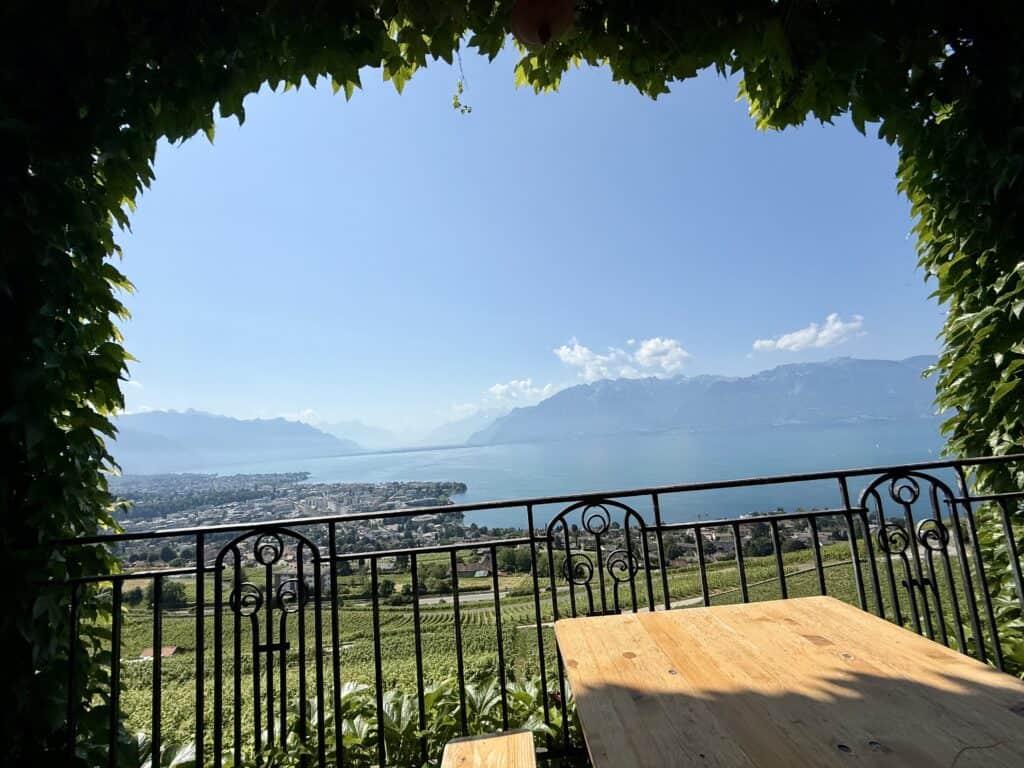
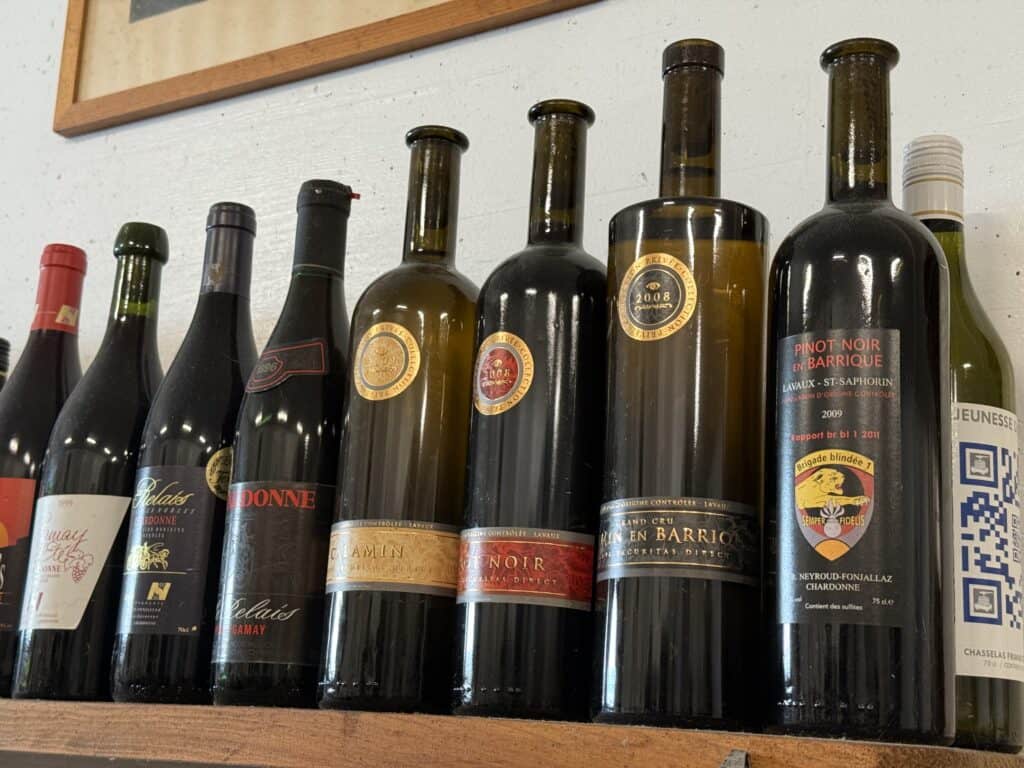
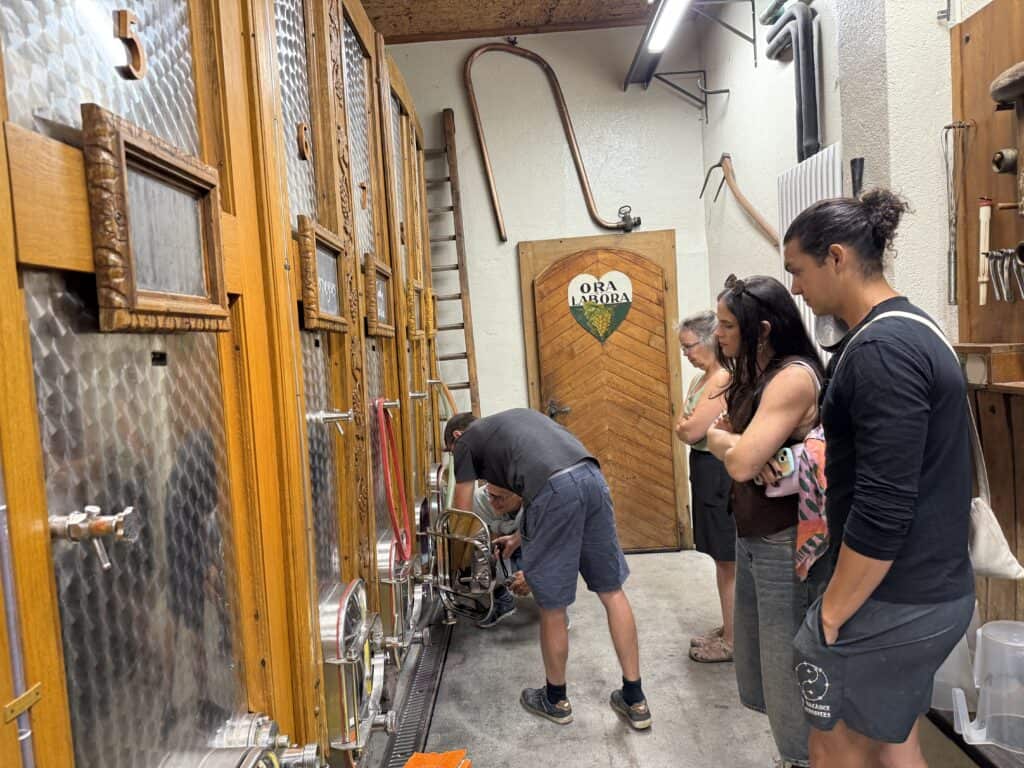
Whether you hike or not, a fun place to end your day is at Lavaux Vinorama in Rivaz. (If you don’t hike there, it’s a 5-minute train ride from Vevey, 11 minutes from Montreux, or 14 minutes from Lausanne). It’s a unique place offering more than 300 different types of wine produced in the region. Visitors can sit in the lively bar or on the calmer patio, and taste different wines, with information about each one provided by the staff, and a choice of various snacks. All of their wines are available for purchase if you want to take some memories home.
Day 3 – Vevey or Lausanne – Charlie Chaplin or The Olympics
If you have a 5th day, or if you don’t mind a jam-packed day, you can do both of these. Otherwise, choose one, and look forward to the other next time.
Option 1:
Vevey is a few minutes’ train ride from Montreux, but has a completely different, and perhaps slightly more authentic, vibe. It has a nice lakewalk with fun sculptures, including Charlie Chaplin, in and along Lake Geneva. Among the sculptures is the iconic stainless steel fork in the lake. The fork was initially created in 1995 by the Swiss artists Jean-Pierre Zaugg and C. Toda as a temporary exhibit to commemorate the tenth anniversary of Vevey’s food museum. Now it is synonymous with the town.
If you happen upon Vevey on a Tuesday or Saturday, don’t miss the excellent year-round market, full of crafts and a diverse selection of food, just a short walk from the train station.
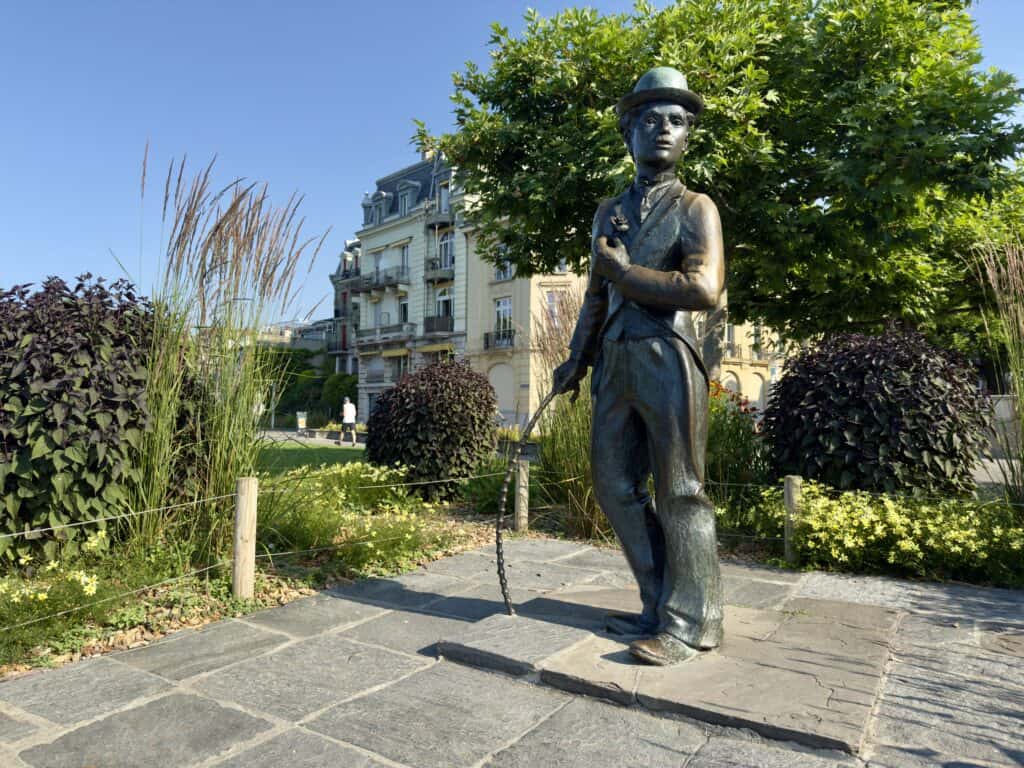
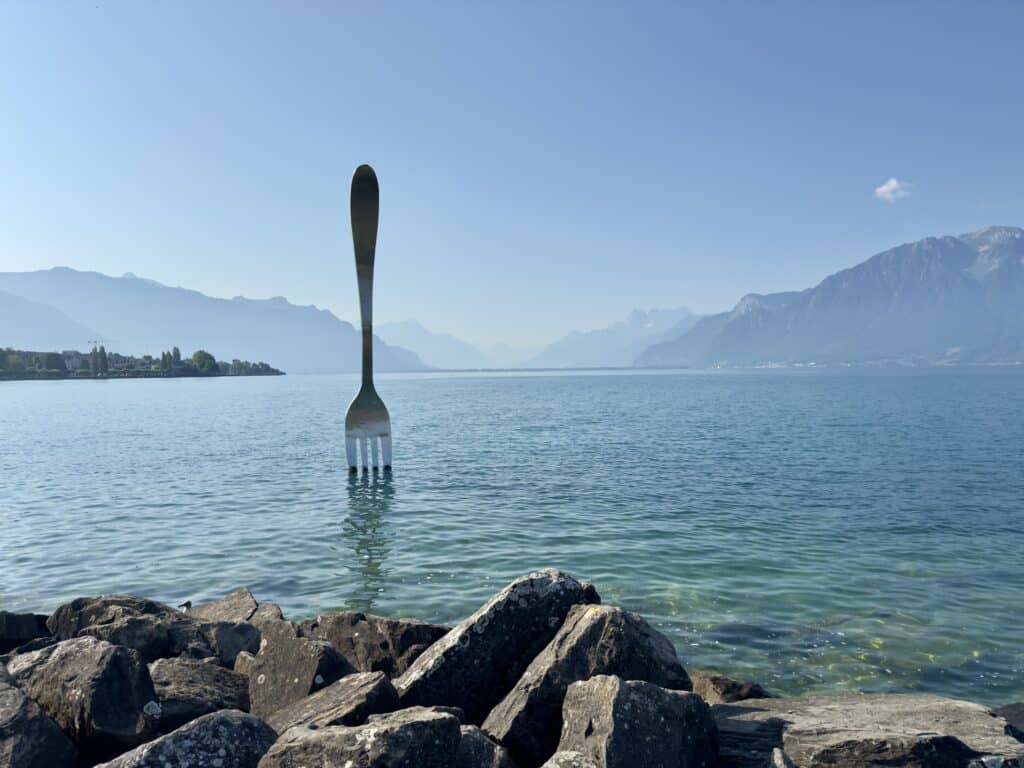
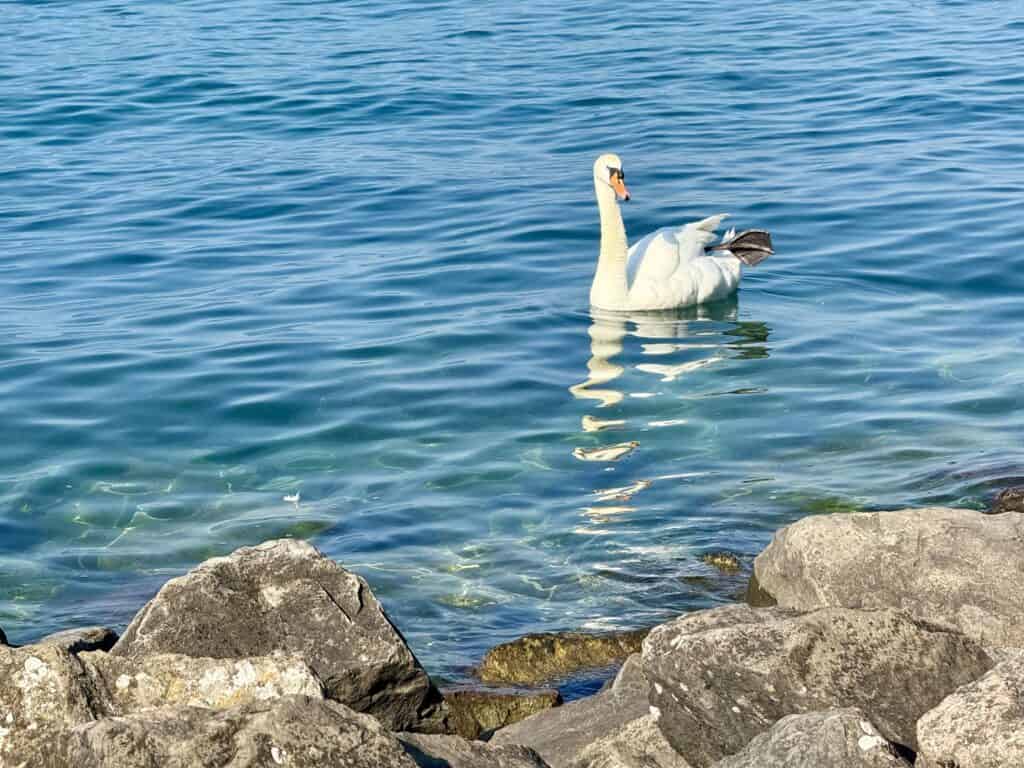
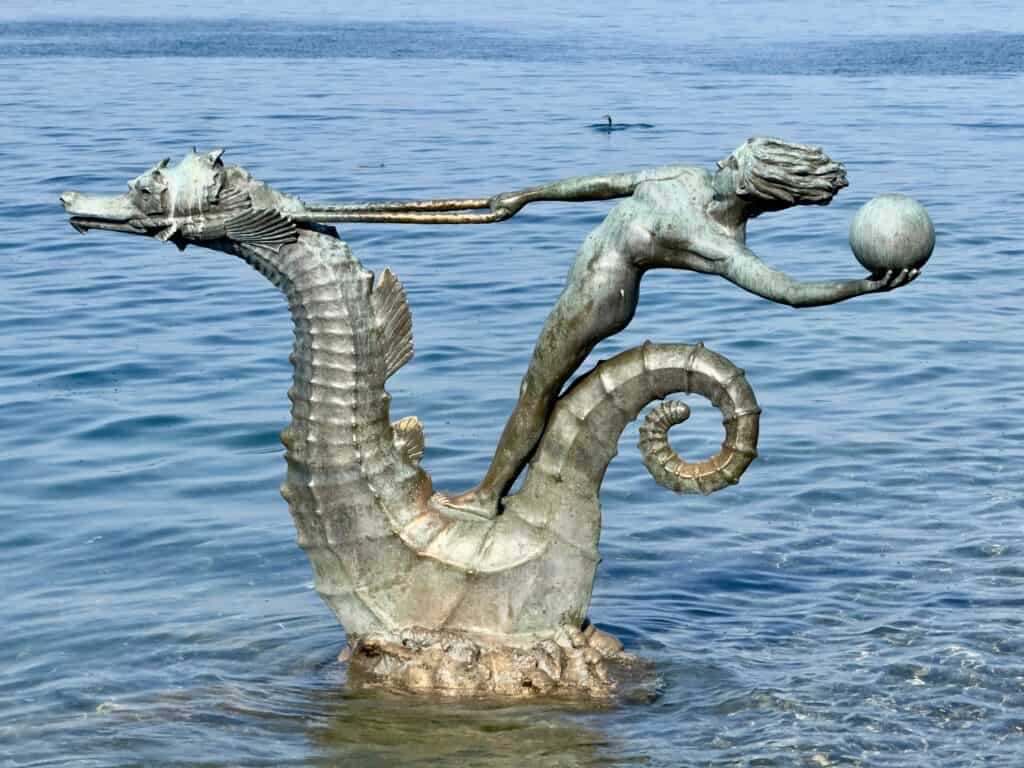
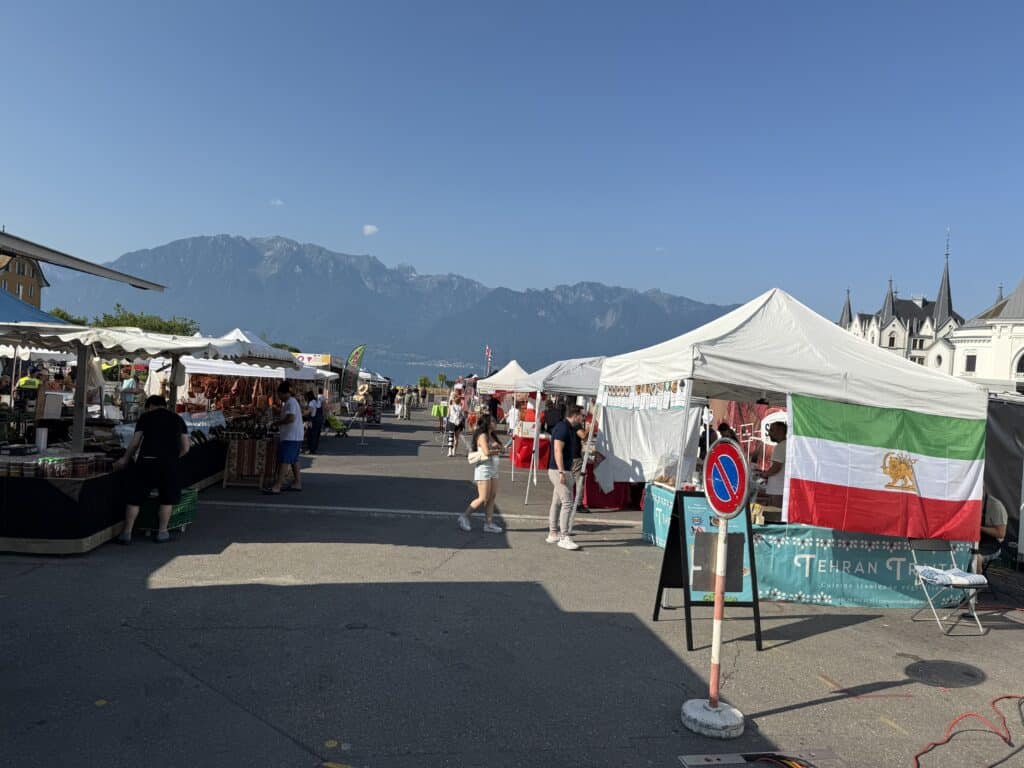
The town is also known for Chaplin’s World, the only Charlie Chaplin museum in the world. Chaplain lived in Vevey for the last 25 years of his life. The immersive experience in Chaplin’s former home highlights a collection of artifacts from Chaplin, his family, and, of course, his films. In addition, the ten-acre grounds feature centuries-old trees and splendid views. (Sadly, this is one of the few places where the Swiss Travel Pass does not cover.)
Option 2:
From Montreux, Lausanne is just 20 minutes away by train. It is, by far, the biggest city on the Riviera, and even has a handy (steep!) metro line. Lausanne is built on the side of a mountain, and the train arrives in the middle of the city, with half of it (the lake-oriented half called Ouchy) below the station, and the other half (the old town, and neighborhoods where year-round residents live) high above it. The metro takes you quickly and easily from one part to the other.
Other than being part of the Swiss Riviera, Lausanne’s two big attractions are its Olympic Museum and its impressive old town.
The lakefront Olympic Museum & Sculpture Garden opened in 1993, but its spirit dates back to 1896. Pierre de Coubertin (1863 – 1952), a Frenchman who later moved to Switzerland, was almost single-handedly responsible for reviving the ancient tradition of the Olympic Games, which had been dormant for nearly 1500 years. It was his life’s obsession to resurrect the games and promote understanding, tolerance, and peace in the world through athletic competition. This museum is in his honor.
With more than 10,000 artifacts, it is the largest collection of Olympic Games memorabilia in the world. US visitors can get a thrill seeing Simone Biles’ leotard, Lindsey Vonn’s helmet, Erik Heiden’s skates, and Katerina Witt’s skating costume, among many others.
The engaging and interactive museum traces the games back to 776 BC, and has many decades of collections from all of the “modern” games, starting with the first one in 1896, in, appropriately, Athens.
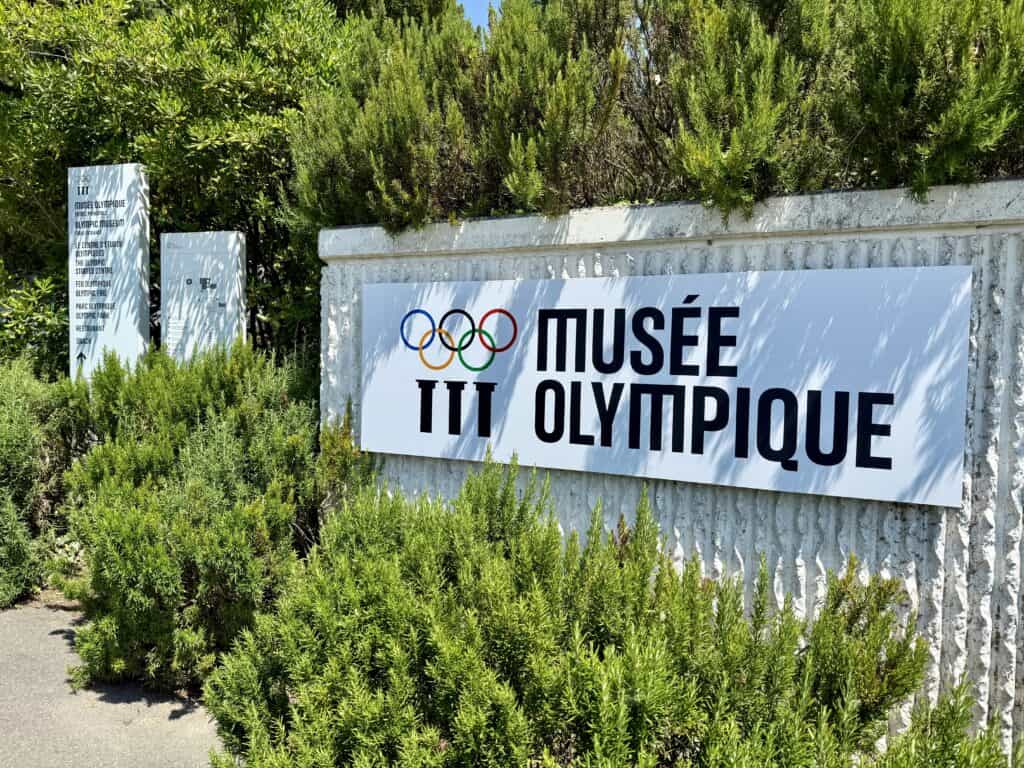
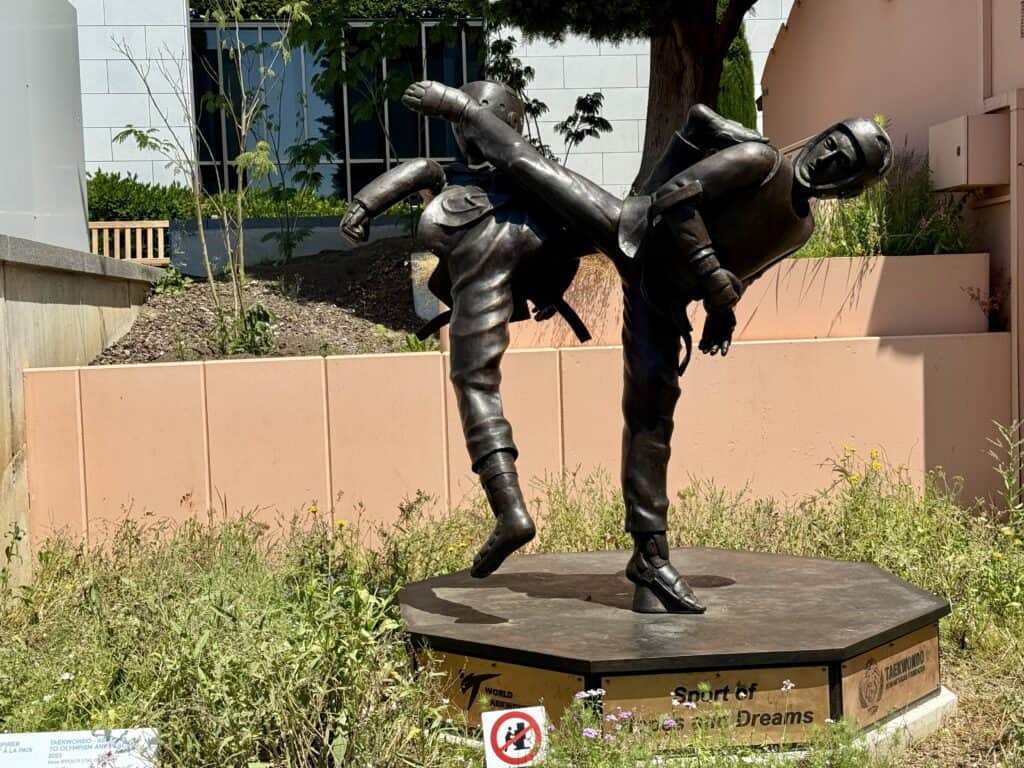
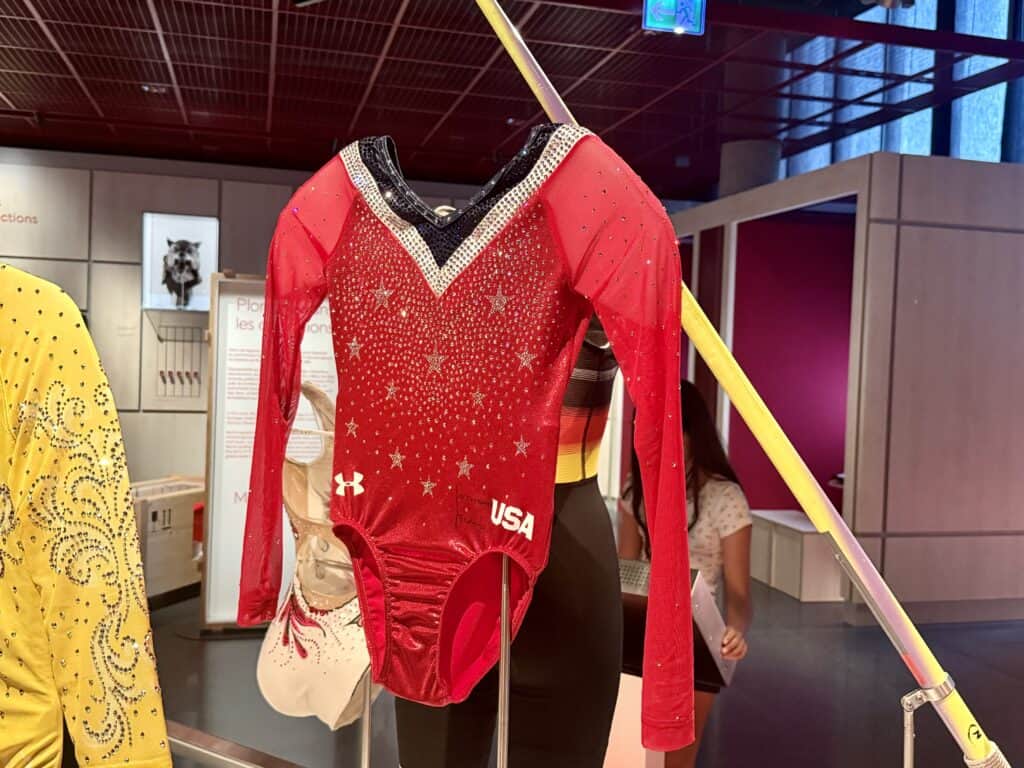
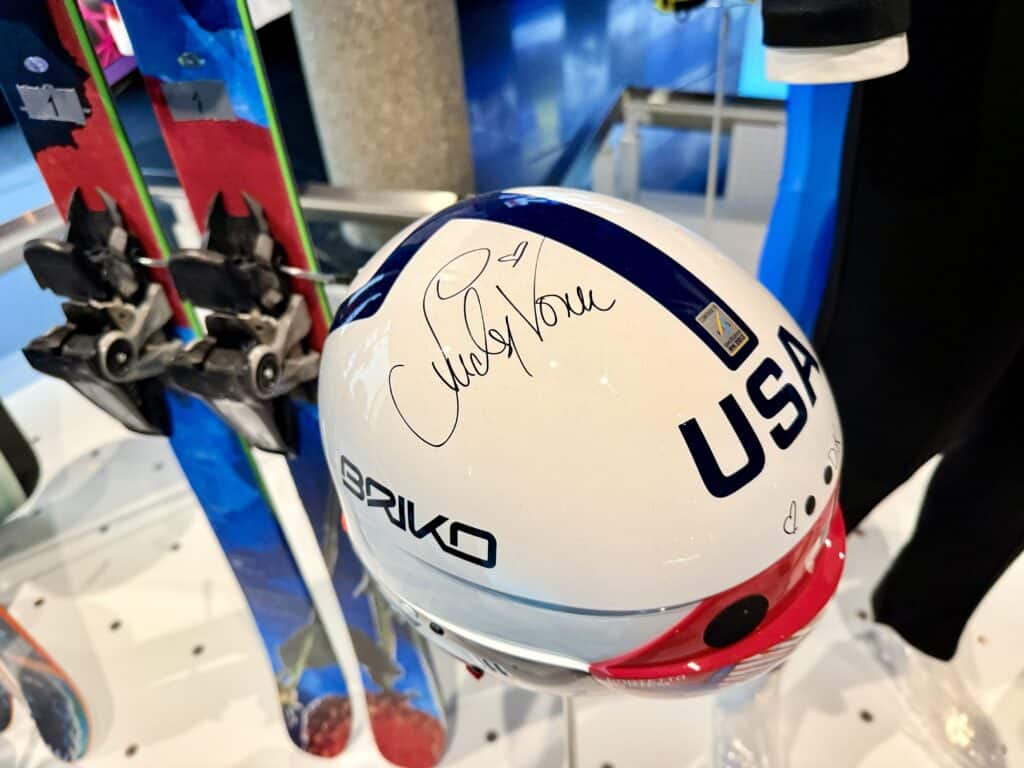
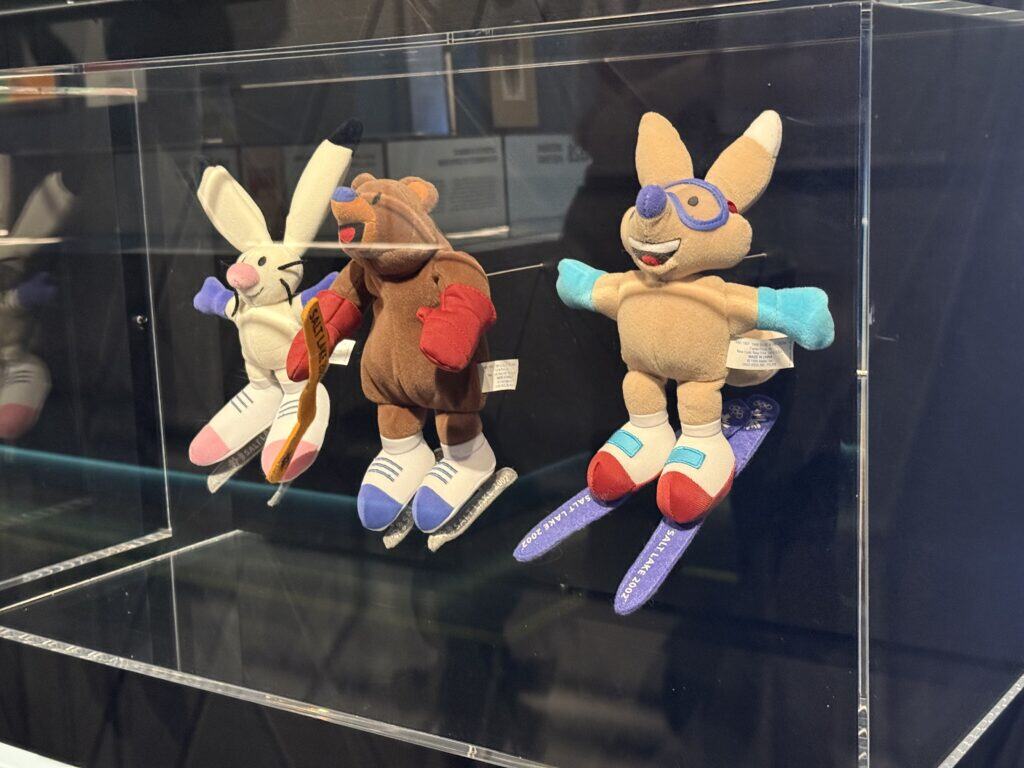
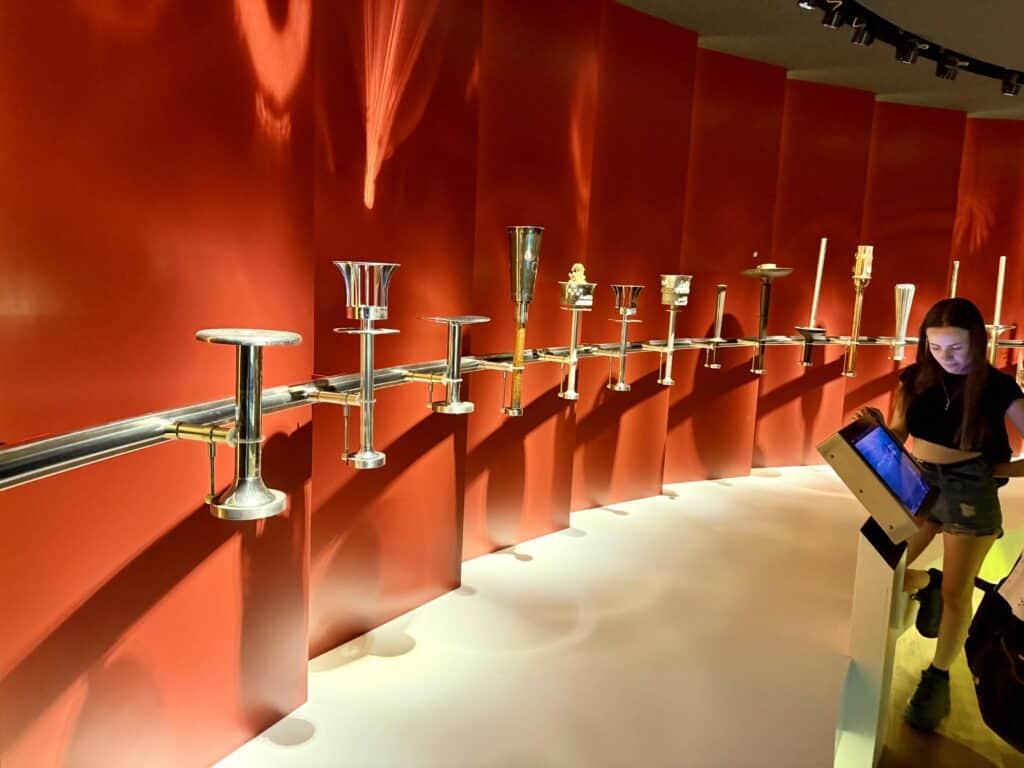
After enjoying the museum and the lakefront area, take the metro up to Lausanne’s old town. Dating back to the 1300s, this pretty, cobblestoned area with winding streets is filled with shops, cafes, and fountains. It is an enjoyable place to spend an afternoon (except on Sundays when nearly everything is closed.)
Above it all is the gorgeous cathedral, but to get there requires a 400-stair commitment! To its credit, there are a couple of bars along the staircase for one to get a refreshment on the way up.

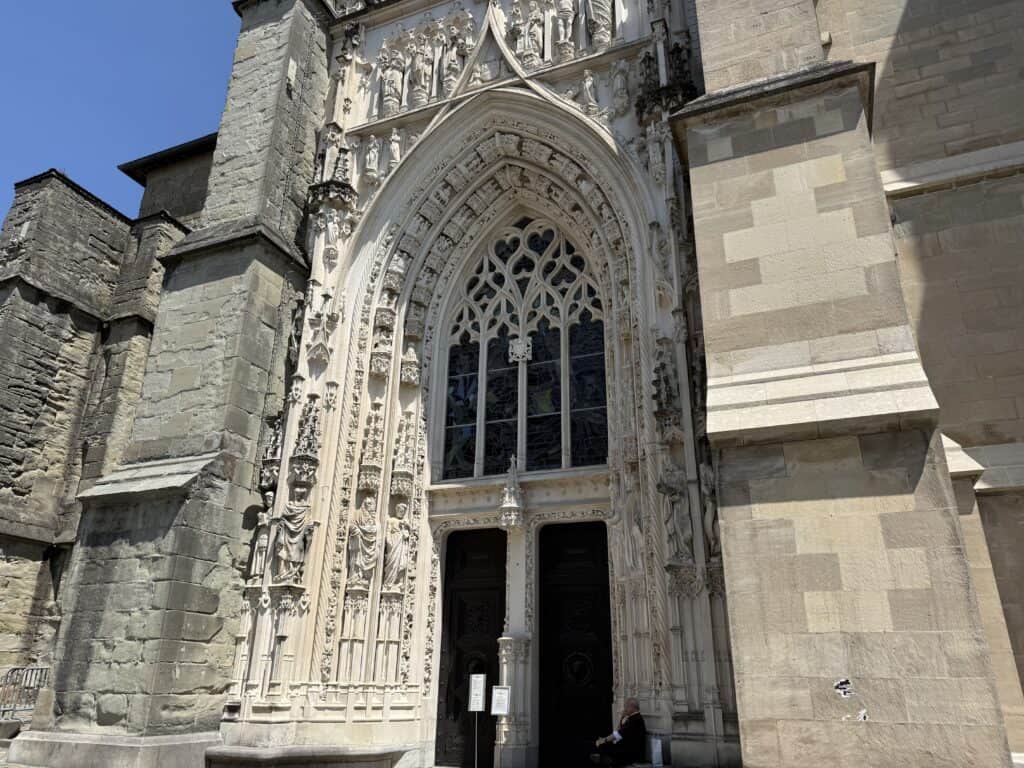
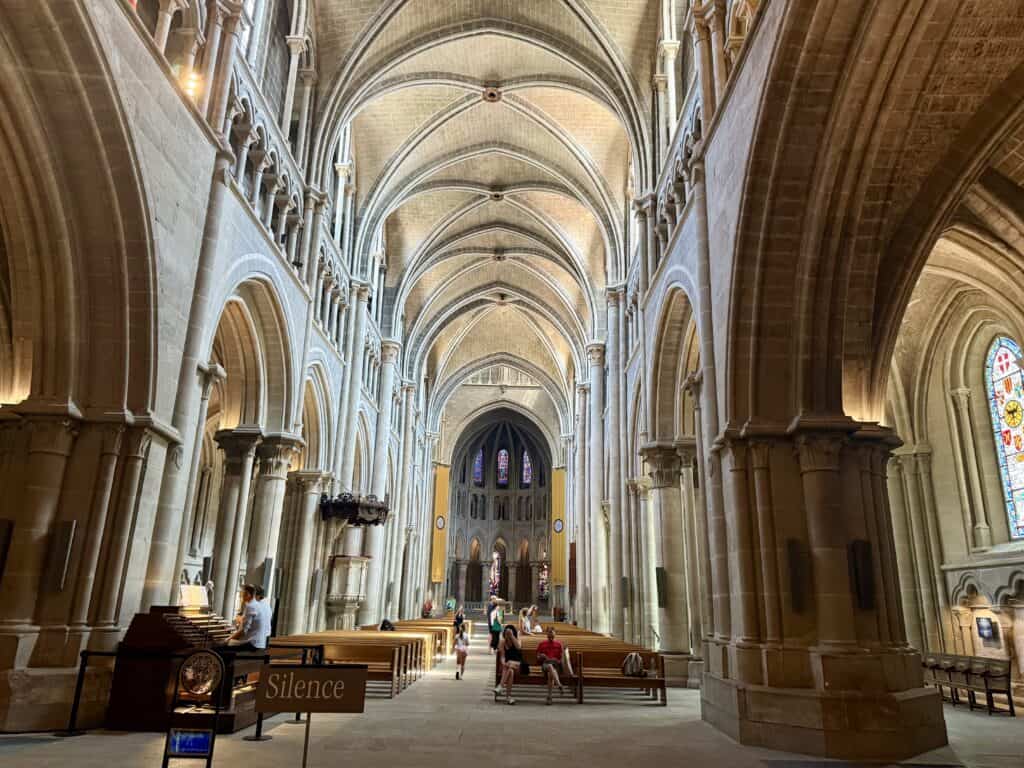
Day 4 – Gruyères – A Castle and Cheese, Glorious Cheese
Leaving the Riviera for part of a day, take the one-hour train ride to the village of Gruyères. Yes, it’s THAT Gruyères, home of its namesake, (minus the “s”), the delicious cheese.
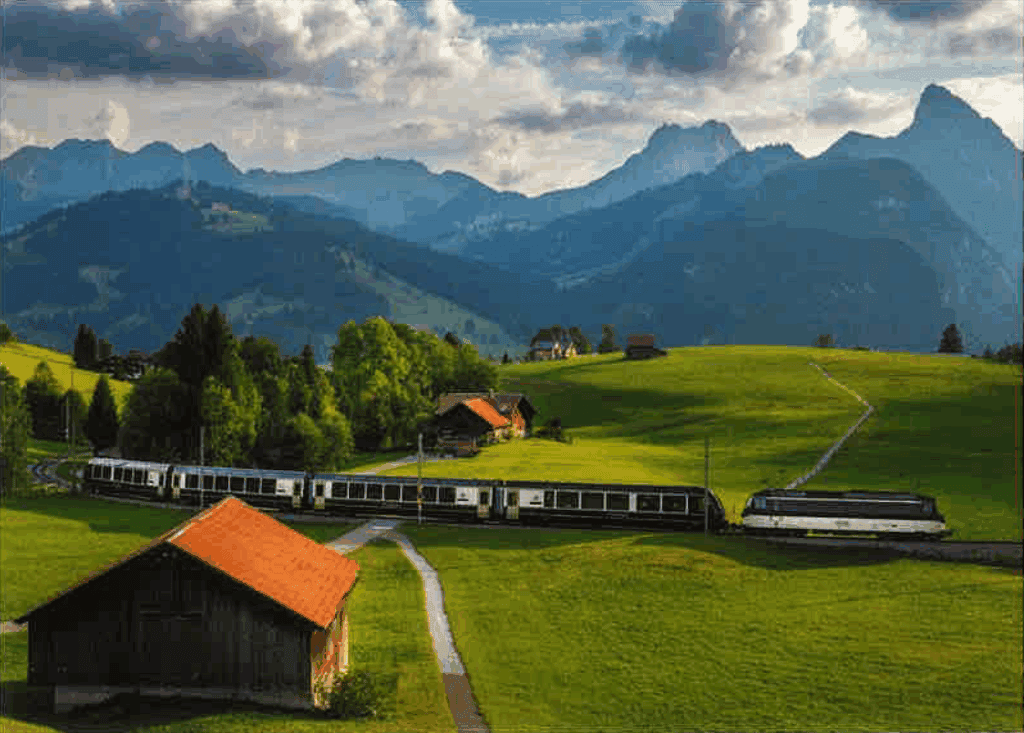
From the SBB train site, pick a train starting with “PE” (for panoramic express) to ride on a special train, the Golden Pass, with extra-large windows from which to admire the Swiss countryside. There is no extra cost. There is a quick change in Montbovon, where you will get off the Golden Line and walk for about 30 seconds to cross the platform and board the second train.
Across from the arrival station is La Maison du Gruyère, a demonstration cheese production facility intended to educate the public and promote cheese tourism. A cheesy (pardon the pun) audio tour, narrated by Cerice the chipper dairy cow, guides visitors through the facility, explaining the process of cheese making, beginning with what the cows graze on all the way to the production and aging of the cheese. Samples of 3-month, 6-month, and 12-month aged gruyére are given to demonstrate the difference in taste.
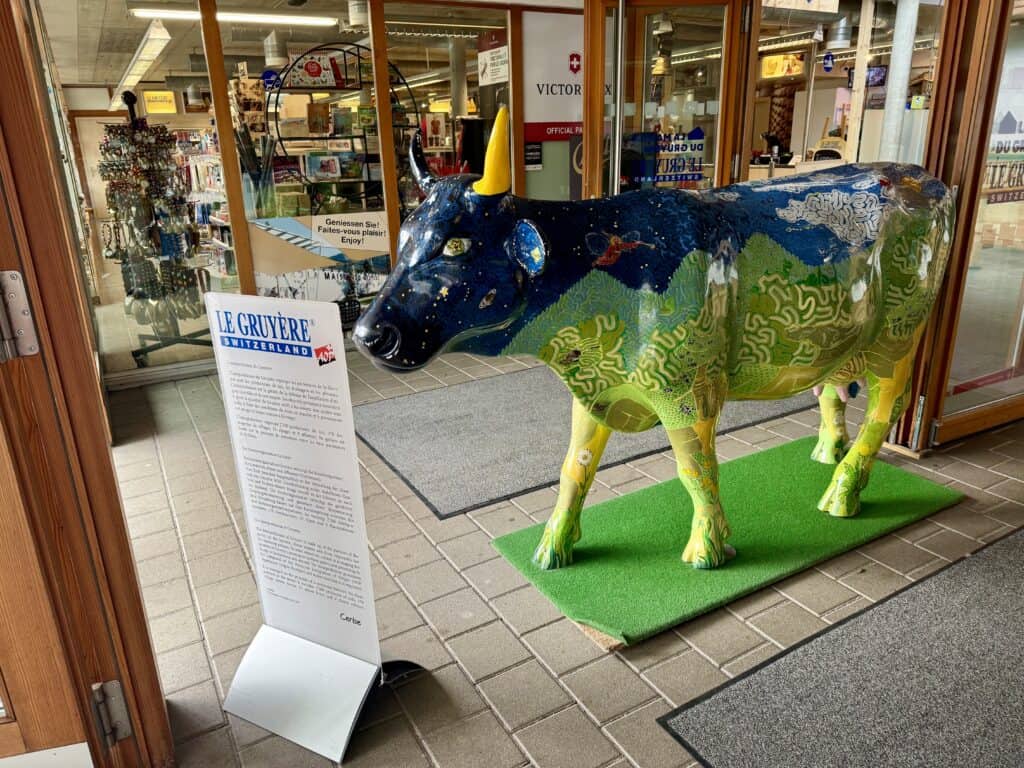
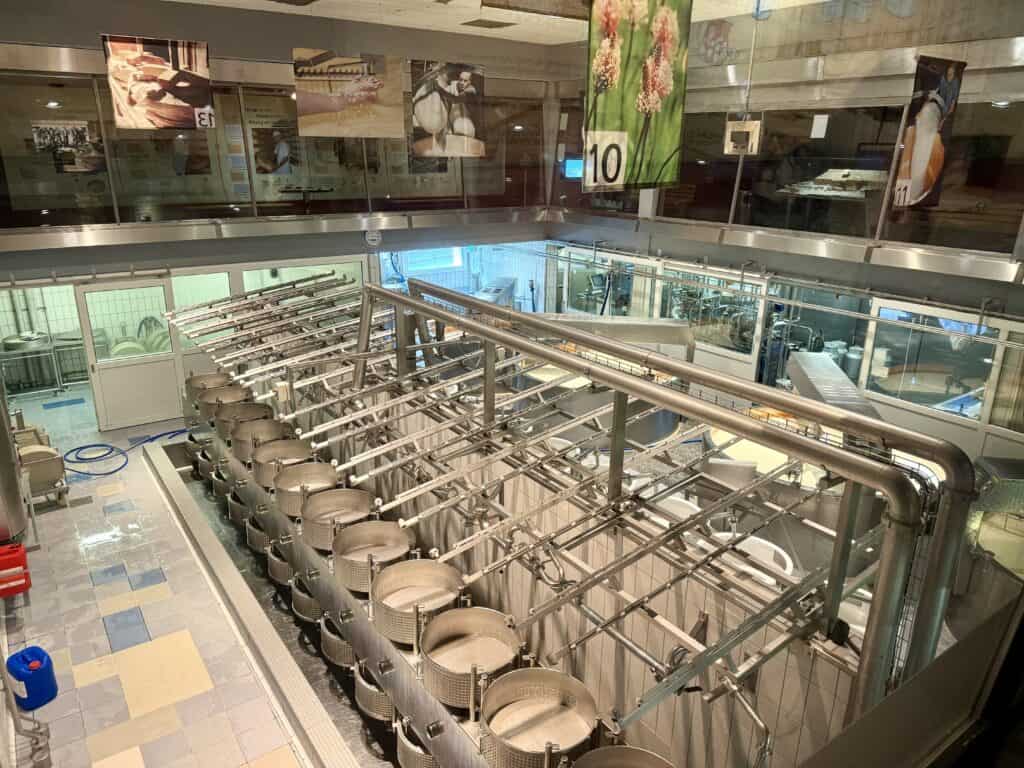
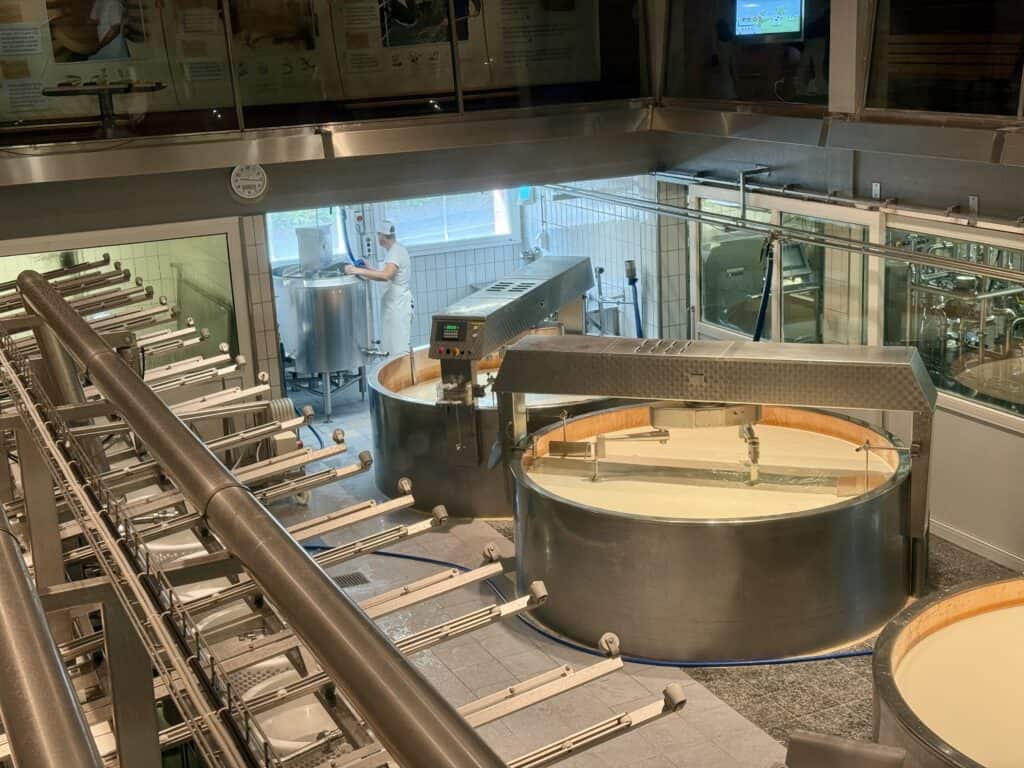
From La Maison du Gruyère, visitors can walk about 15 minutes on a mostly-pedestrian path, or else take a short bus ride, up the hill to the picturesque medieval town of Gruyères, population 2,000. The former gates, watchtower, and ramparts at the entrance of the town date back to the late 1400s.
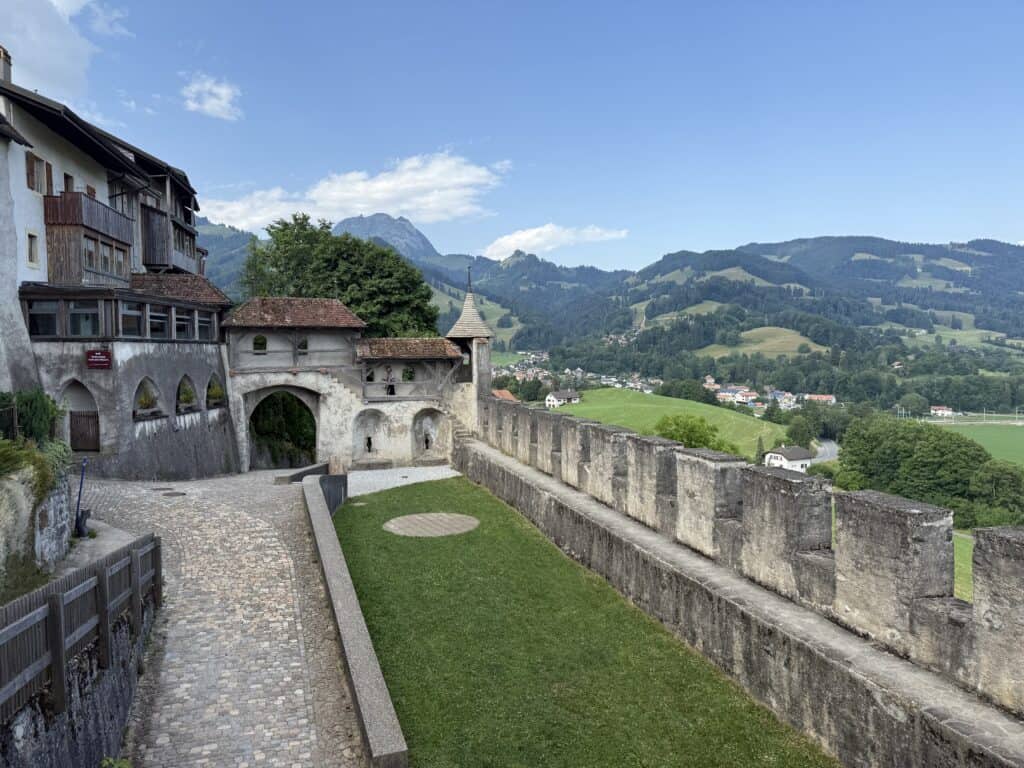
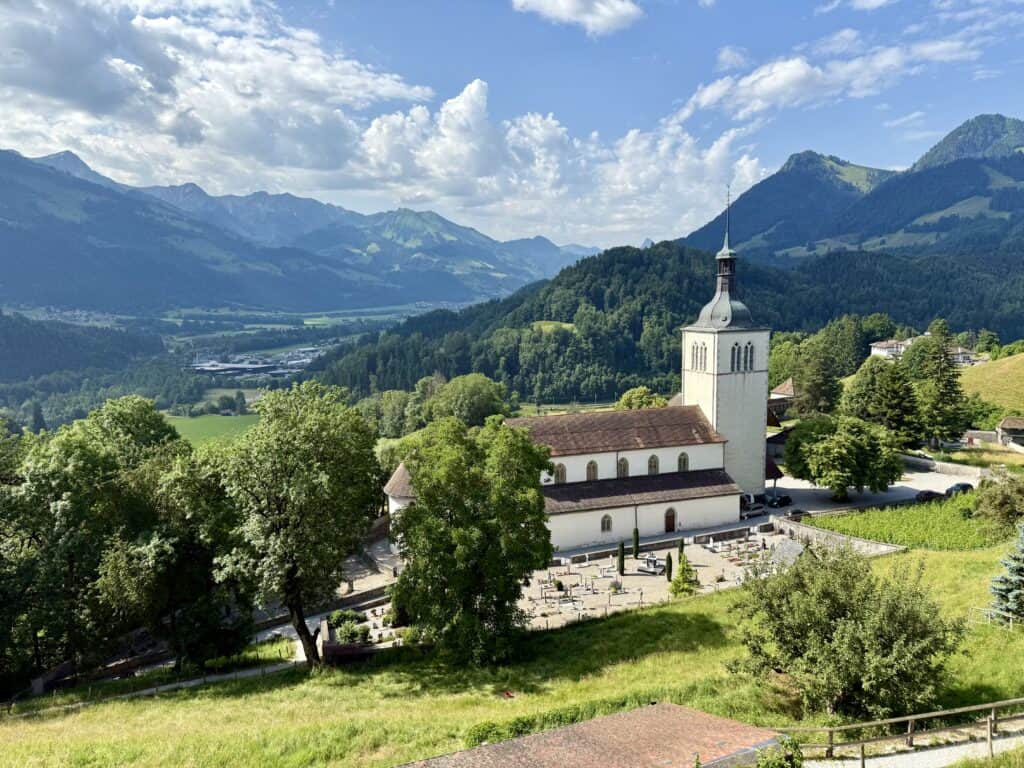
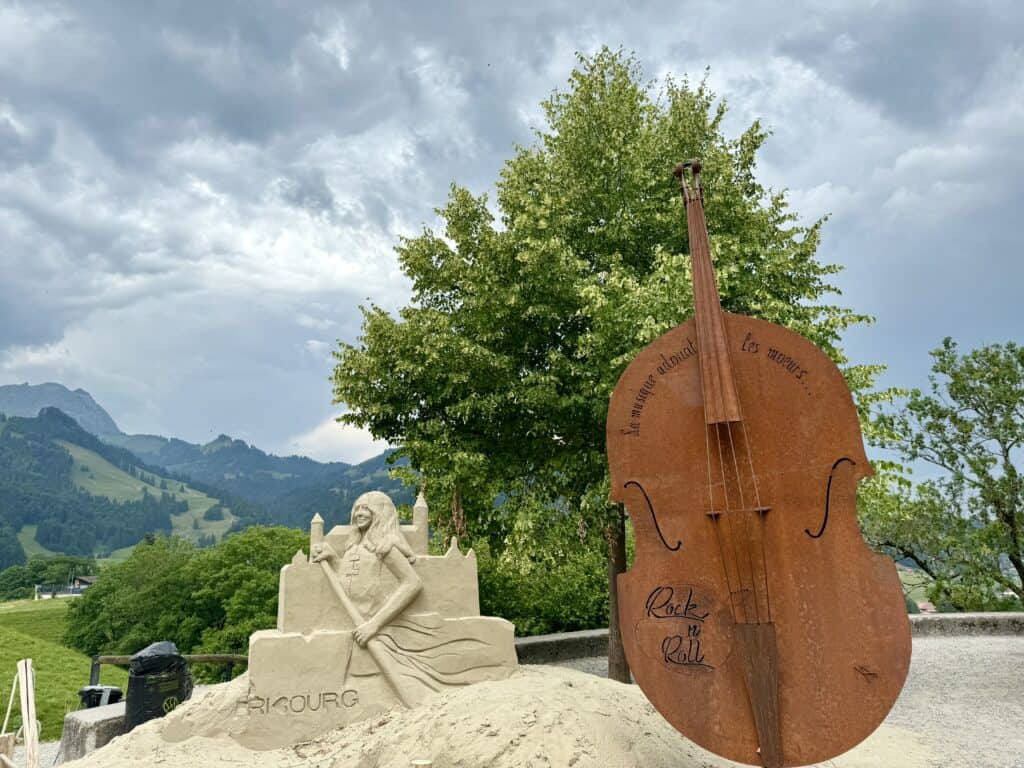
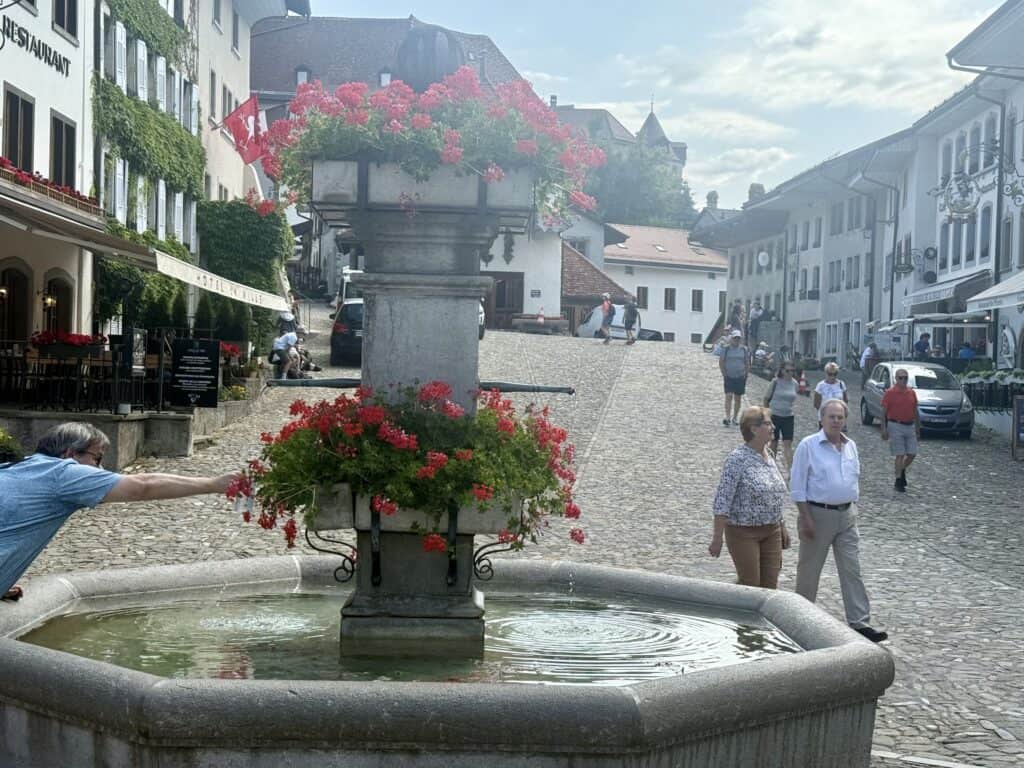
At the top of the town is the striking 13th-century, fortified Château de Gruyères, and its gardens. It was home to the Counts of Gruyères for nearly five centuries. Walking along the ramparts of the Château provides exceptional views.
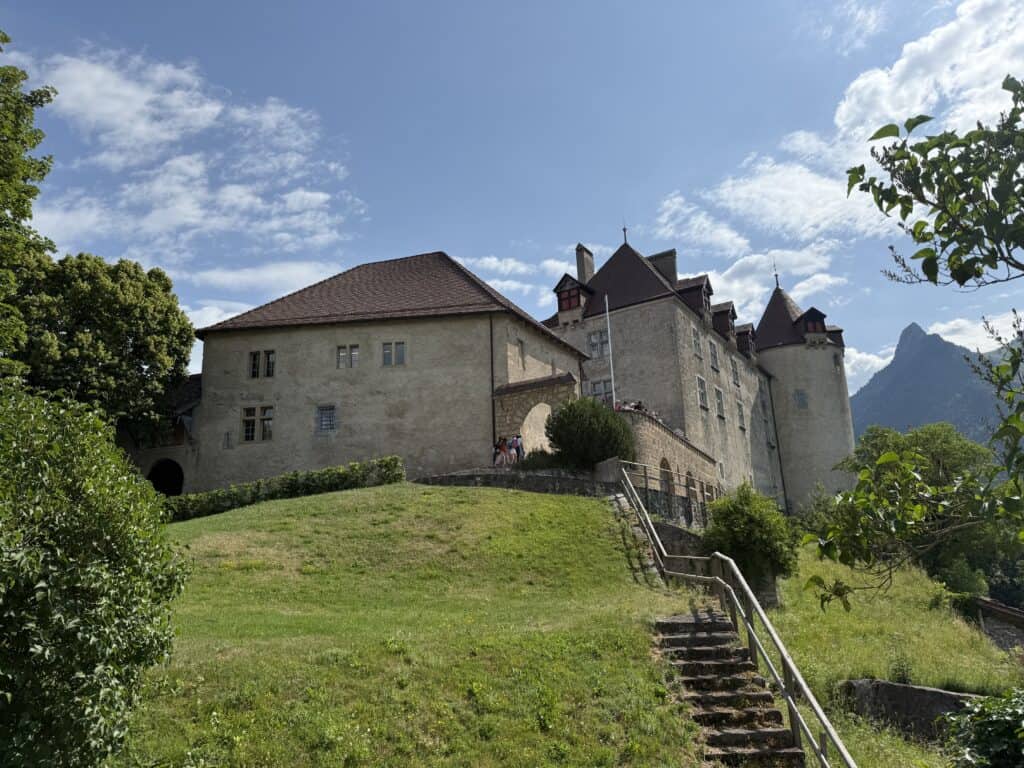
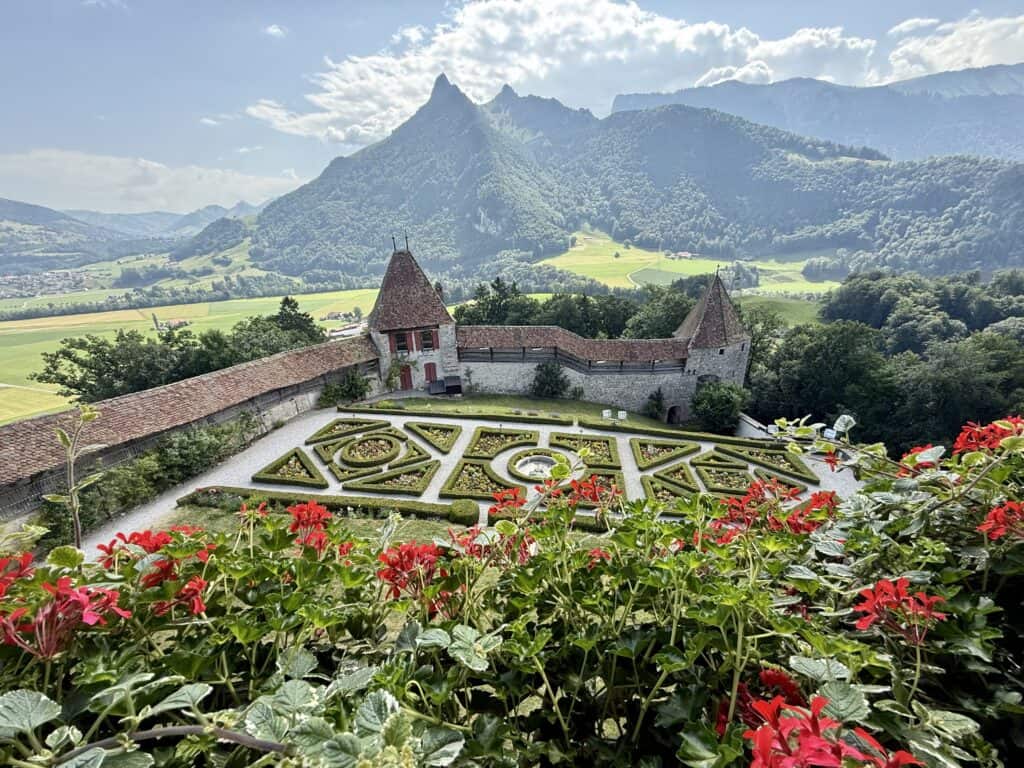
In the mid-1800s, three brothers, Jean-François, Antoine, and Daniel Bovey, acquired the castle to turn it into a summer retreat, and then eventually made it a popular artists’ colony. Daniel, an artist himself, took charge of the refurbishment, but was in an accident that left him paralyzed. His wheelchair is displayed in the Corot Room (far right photo, below).
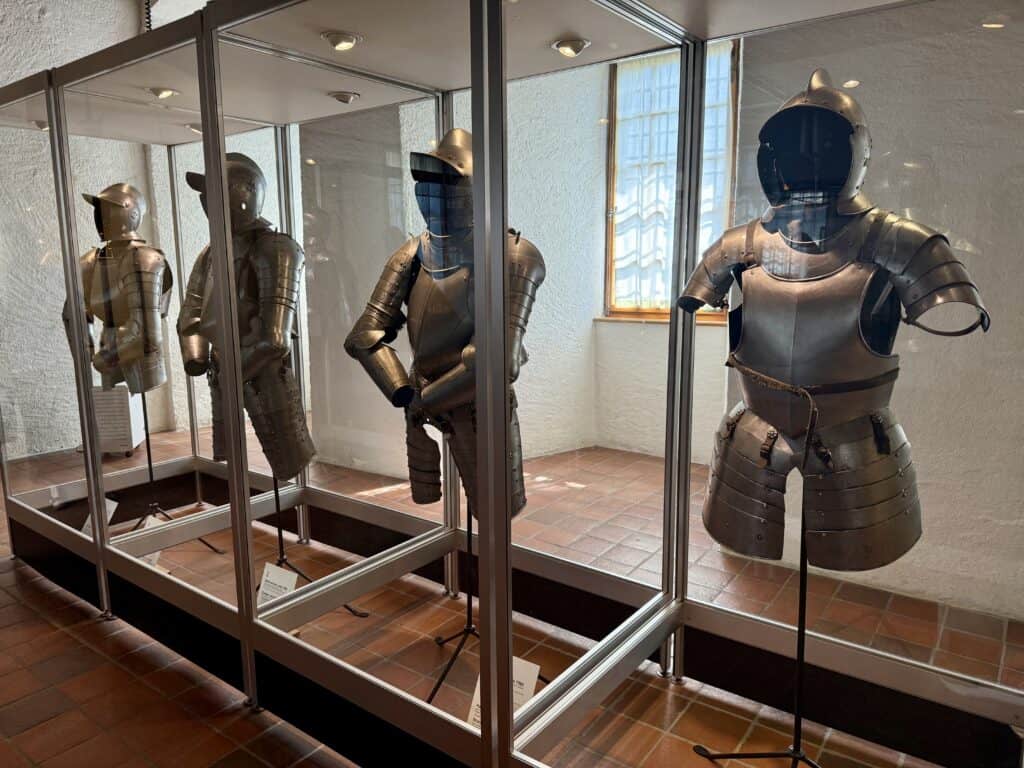
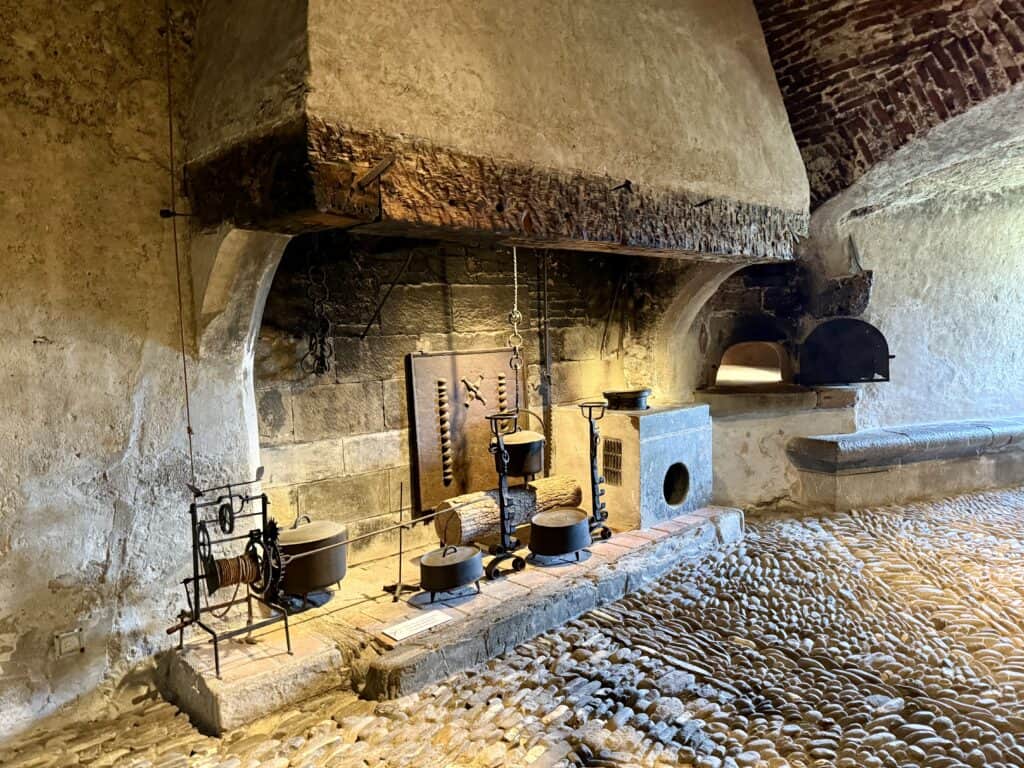
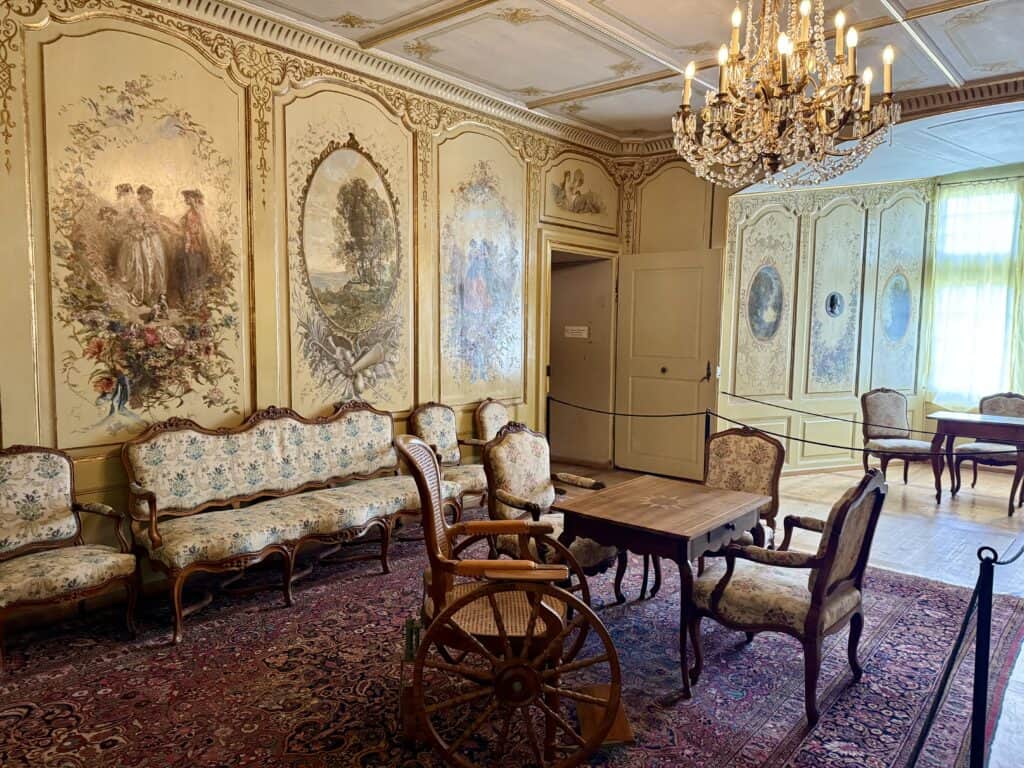
Walking back towards the main town square, visitors can stop at the small but interesting Tibet Museum, displaying Himalayan art from the 6th to 18th centuries.
Quite unexpectedly, Gruyères is also home to the H.R. Giger Museum, devoted to the Swiss artist who, among other things, designed the creatures in the Alien movie series. It feels rather out of place in this idyllic little town. Giger loved Gruyères, and owned the castle in which the museum is housed. He is buried in a cemetery just up the hill. For those interested in Giger’s creepy and sometimes disturbing work, it is worth a visit.
The town is easily walkable and is full of cute local shops and restaurants. Eating a meal in Gruyères is pretty much required. If you plan to eat fondue at any time while in Switzerland, there is surely no better place to do so than here. There are many fondue offerings throughout the village.
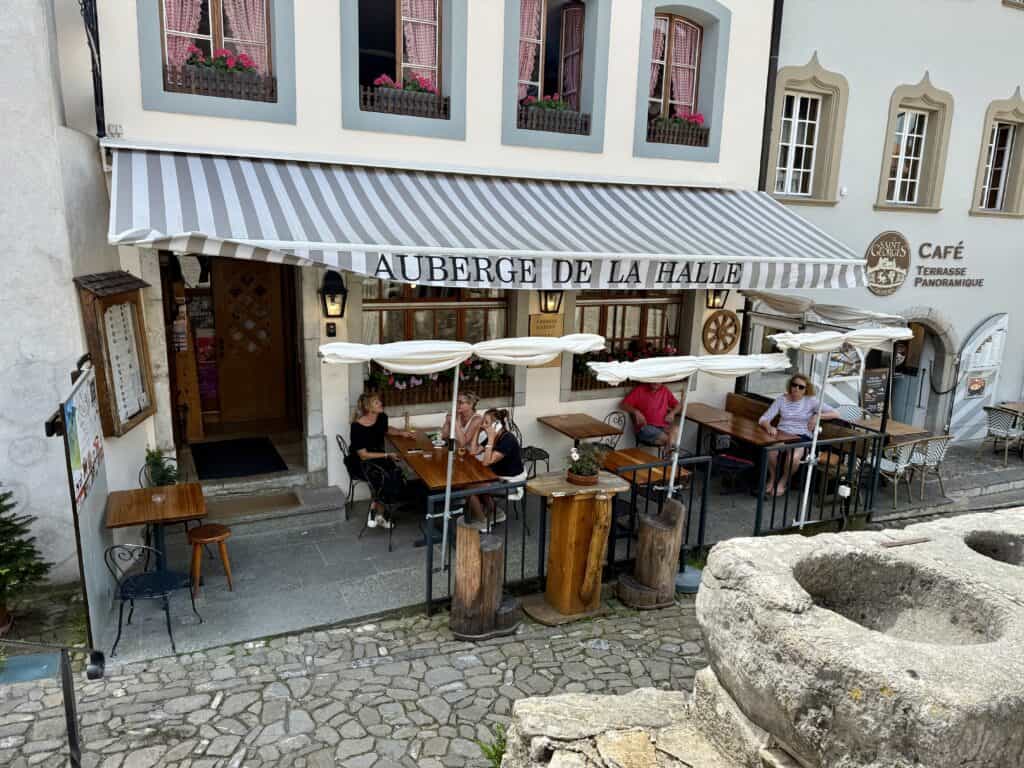
An excellent choice is the friendly Auberge de la Halle. The menu offers multiple variations of fondue, some of which require at least two people to order, but all include bread, potatoes, pickled onions, and cornichons to dip in the oooey, gooey goodness. The warmed cheese is a combination of gruyère, vacherin (a soft French cheese), white wine, and garlic. Absolutely delicious!
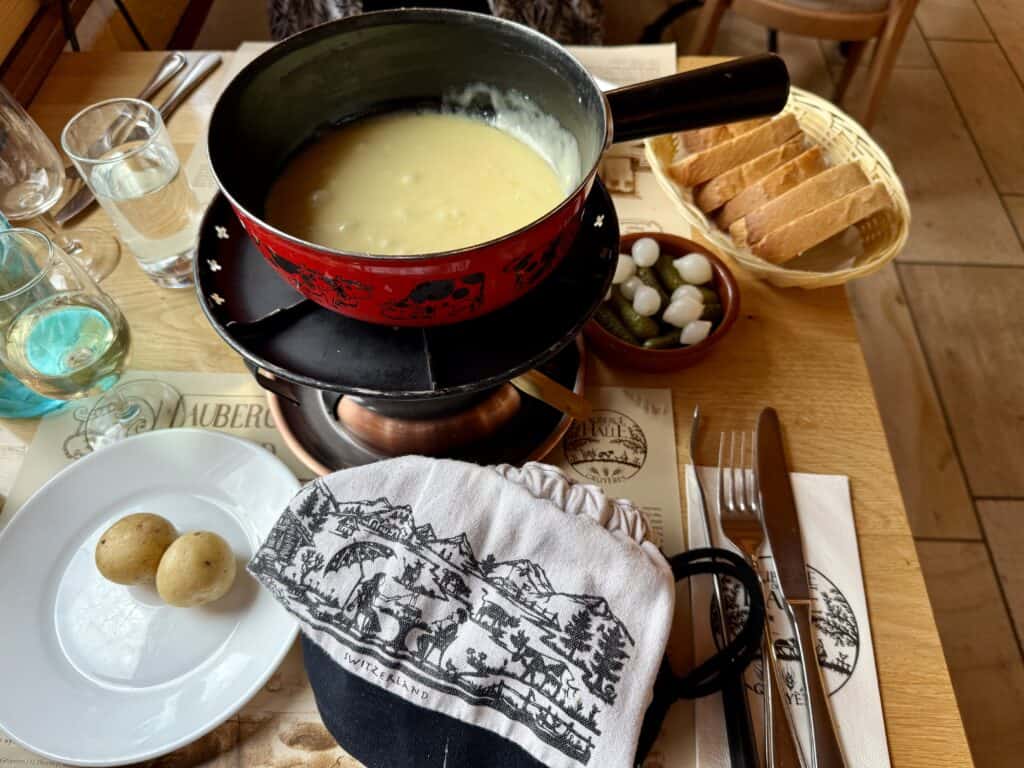
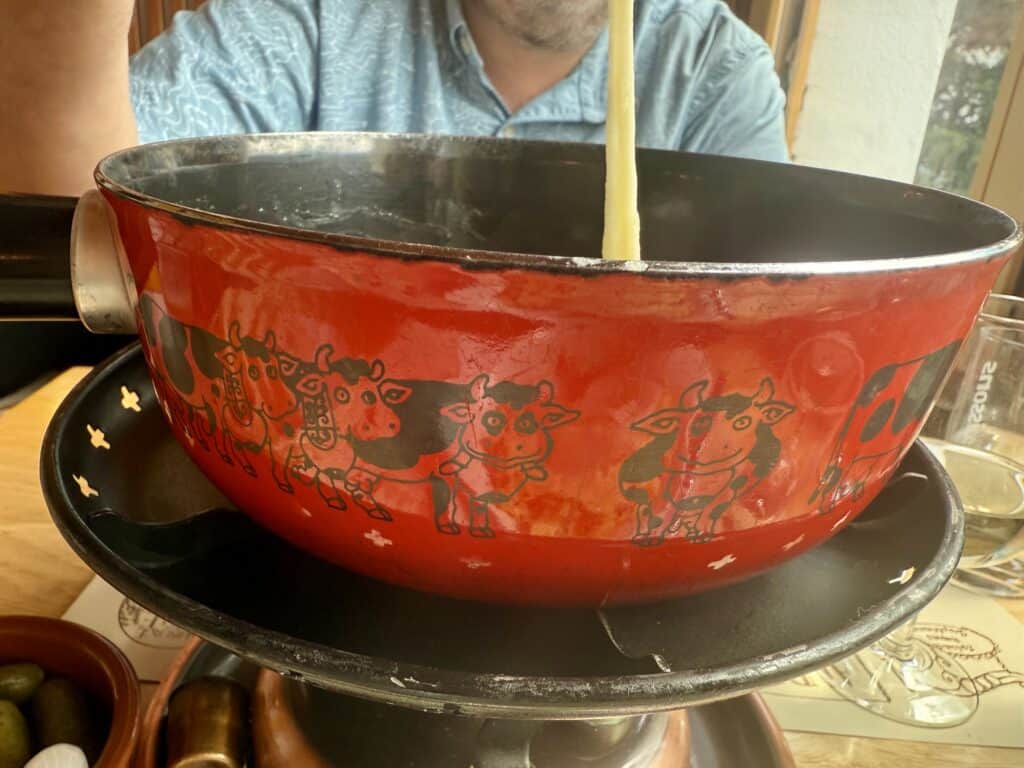
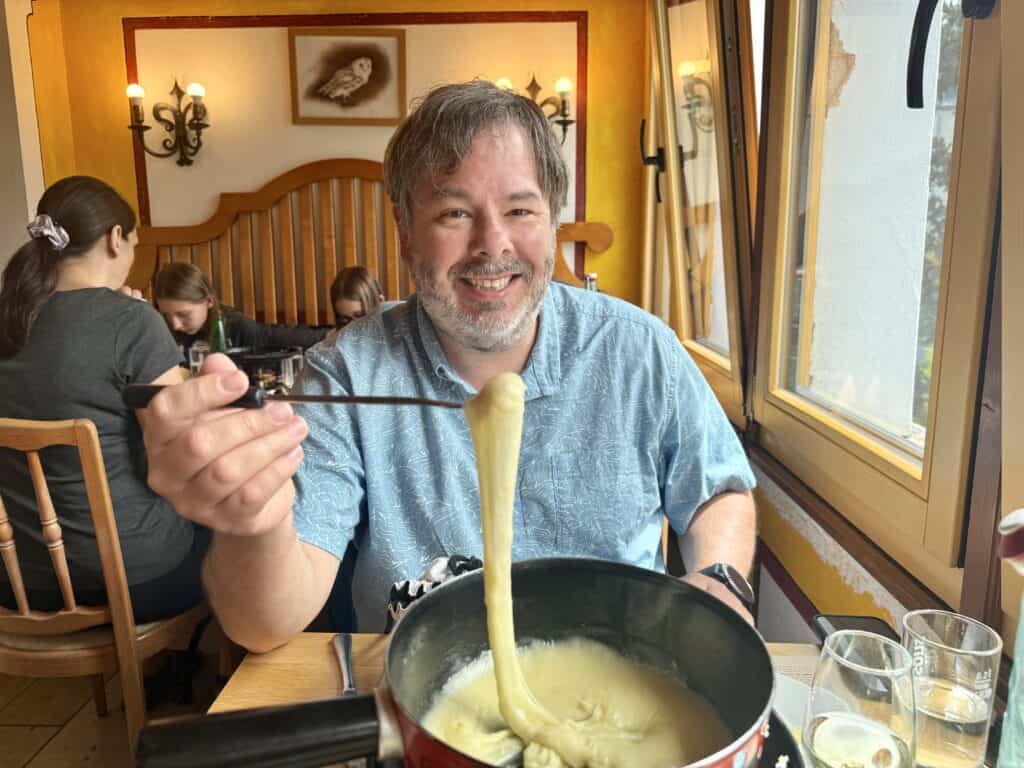
Many tourists combine a visit to Gruyères with a 20-minute train ride to Broc, to visit the Callier Chocolate Factory. It is a very popular attraction, so tickets purchased in advance are highly recommended. (Not covered by Swiss Travel Pass.) The informative, interactive one-hour tour ends in the tasting room, with generous opportunities to try some of the different chocolates.
And here, a quick 4 days in the Swiss Riviera area comes to an end. As is nearly always the case with travel, so much to do, so little time!
If you’re continuing your travels in the region, check out our articles on the Swiss Alps, Lyon, France, and repeat visits to Paris!
Discover more from Werthwhile Wandering
Subscribe to get the latest posts sent to your email.
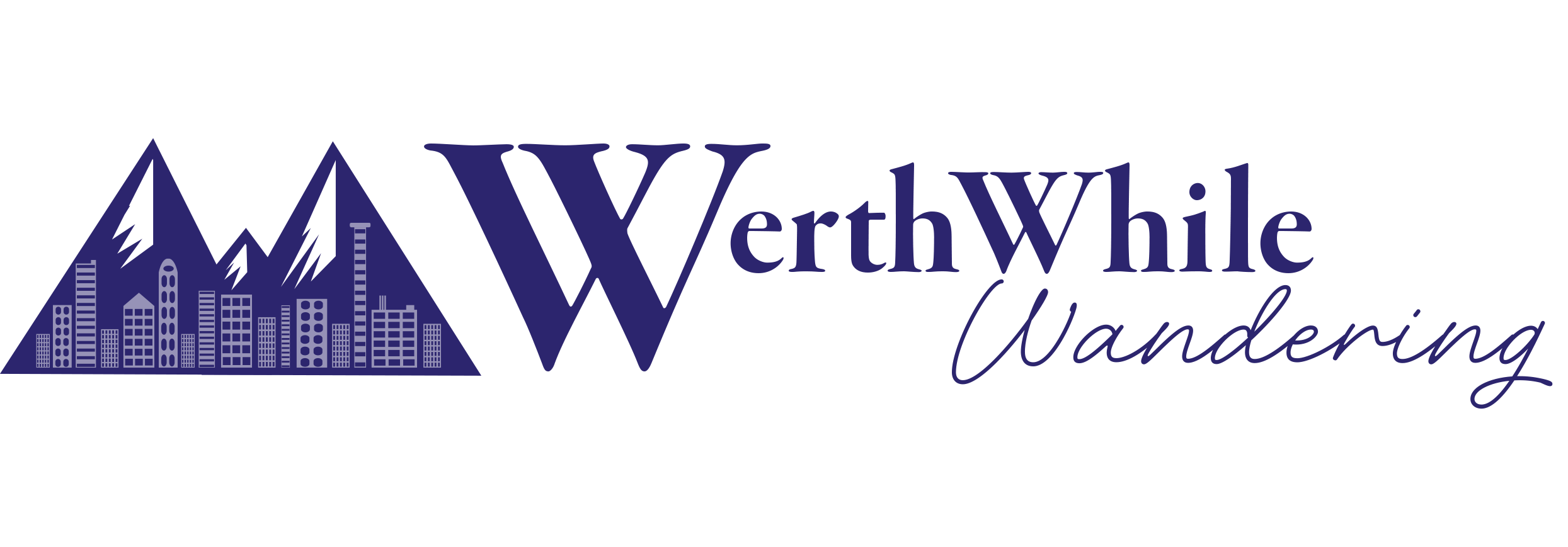
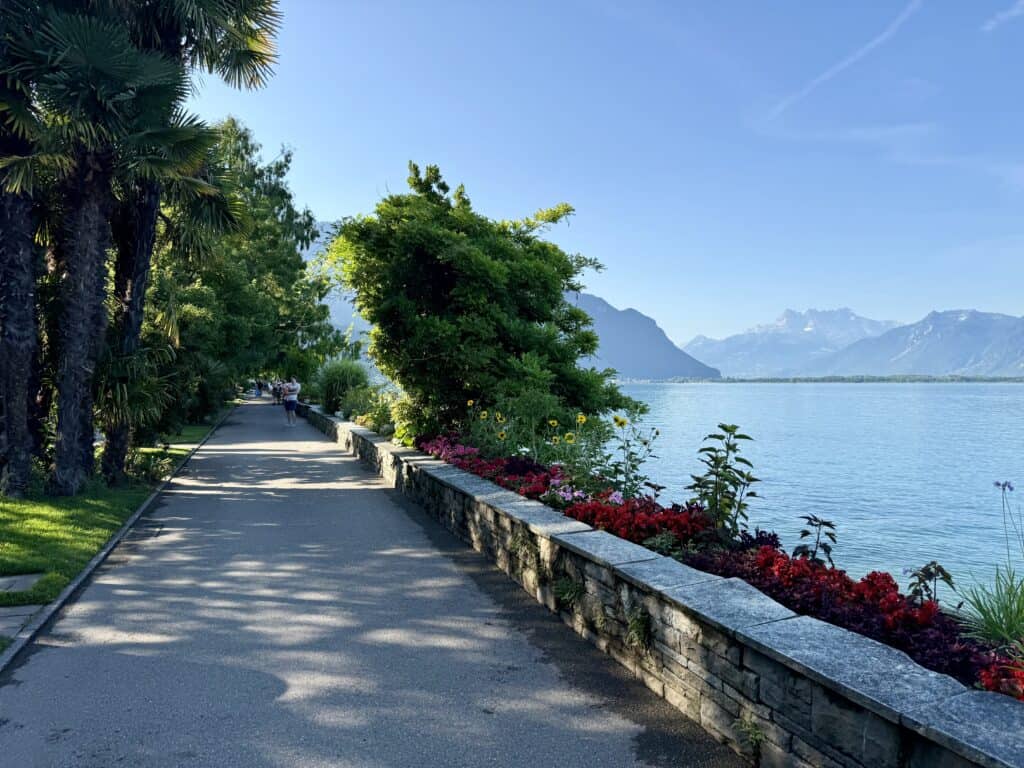
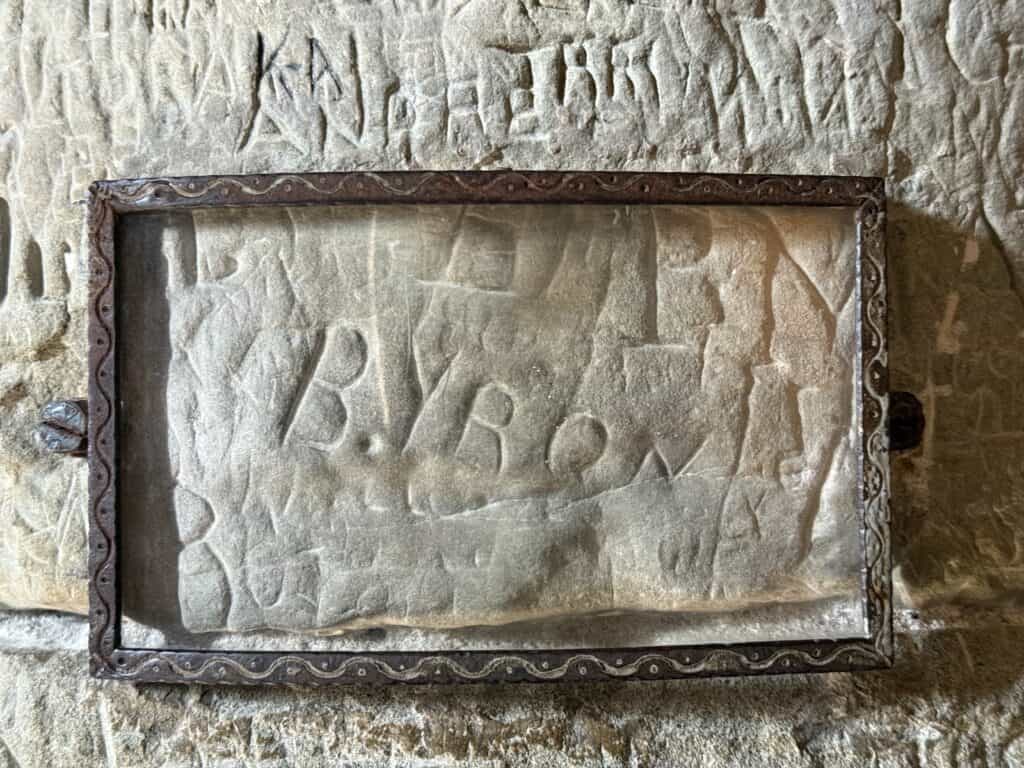
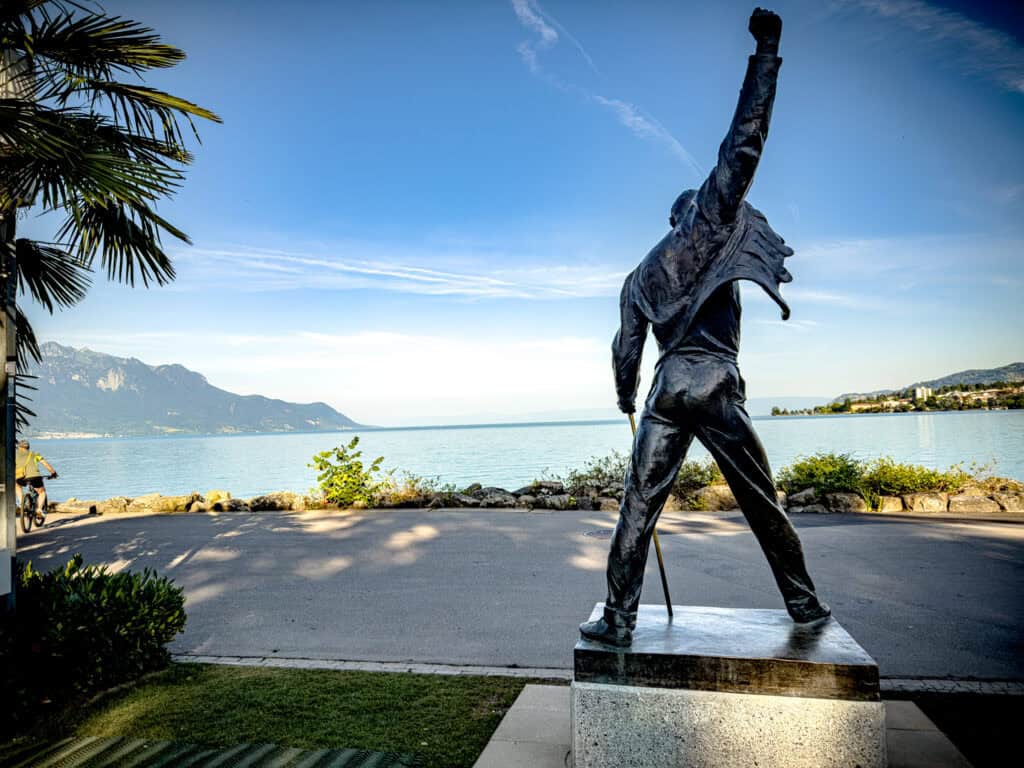
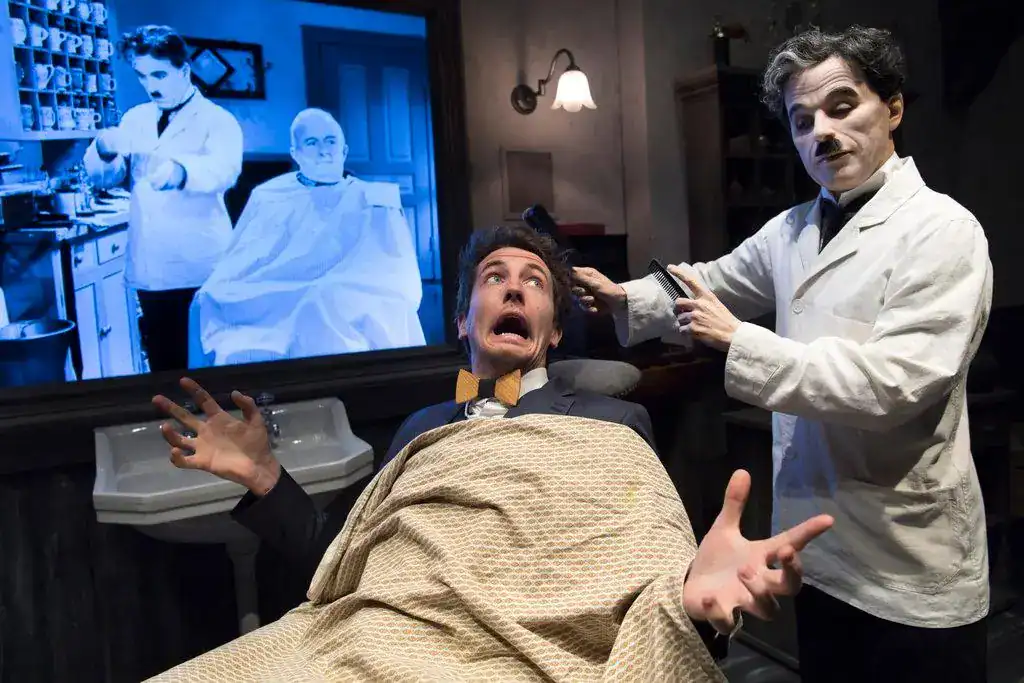
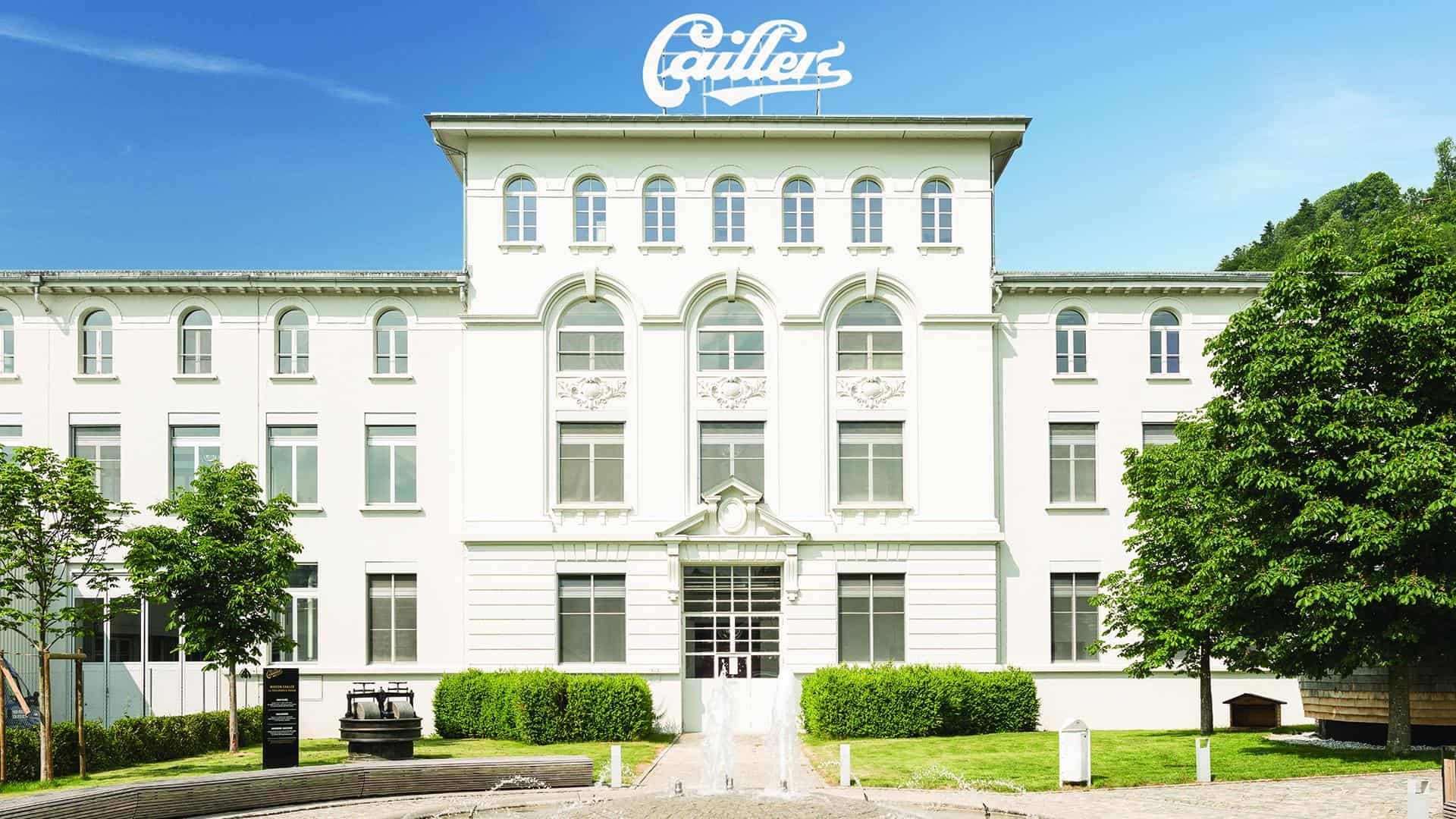




Fantastic pictures.
What a spectacular itinerary! The images are incredible! Looks like a wonderful trip!
Simply spectacular!
Thank you! It really is!
What a remarkable four-day itinerary! The scenery is breath-takingly beautiful by itself, even without all the interesting towns, museums, cafes, wineries and other places you visited. Def makes me want to see it all in person!
Thank you, it was remarkable! It was also relatively relaxing and stress-free (as far as international travel goes). We highly recommend!